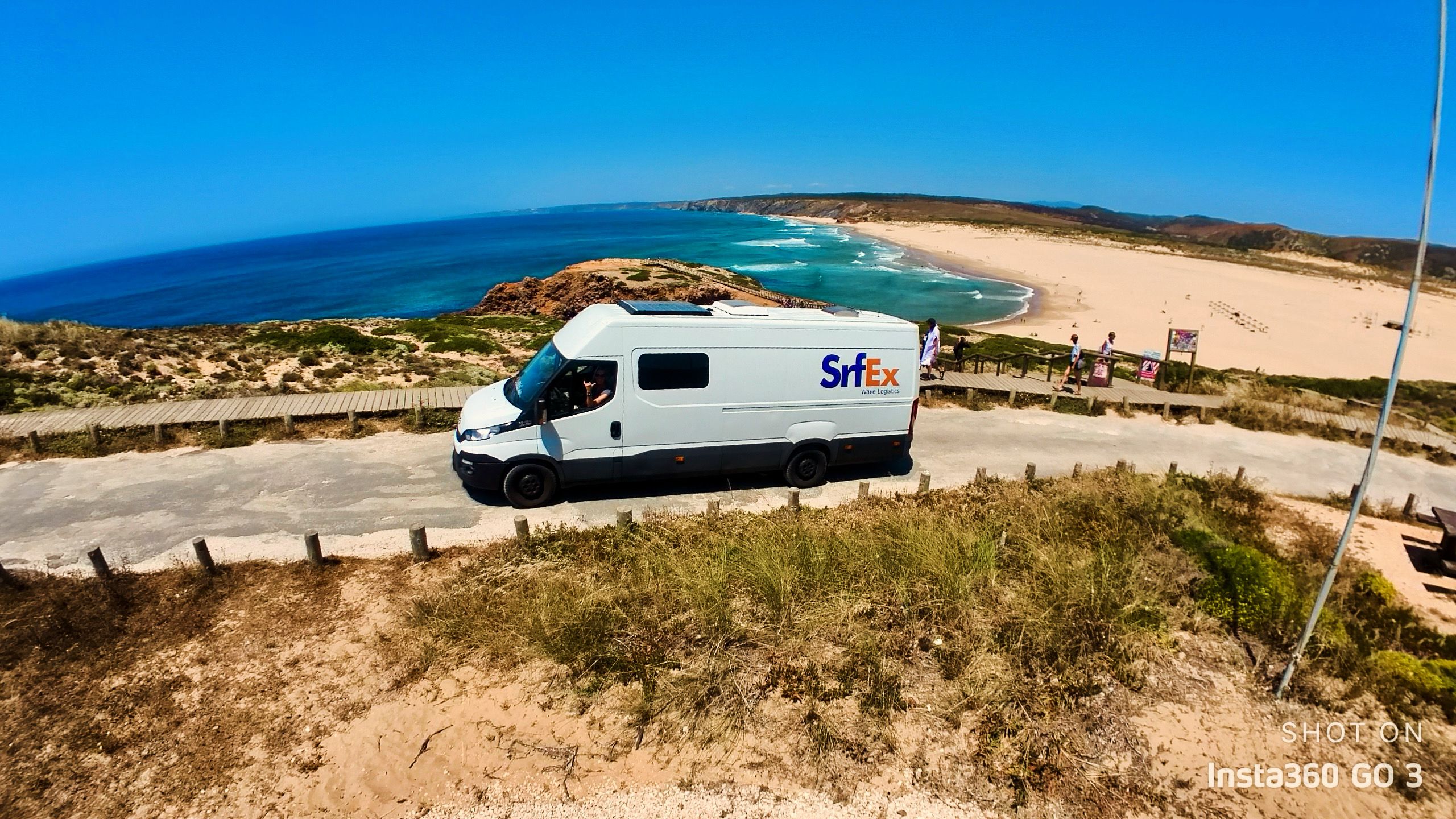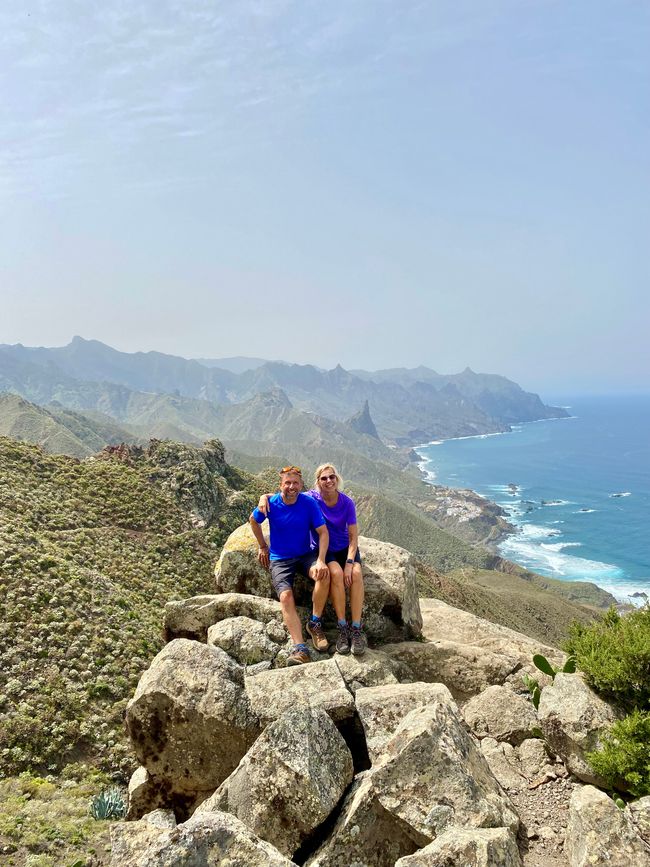
Coastal Nomads - Suzi, John & Betty
vakantio.de/coastal-nomads-suzi-john
Galicia - just when you thought it couldn't get any prettier
פֿאַרעפֿנטלעכט: 13.08.2024

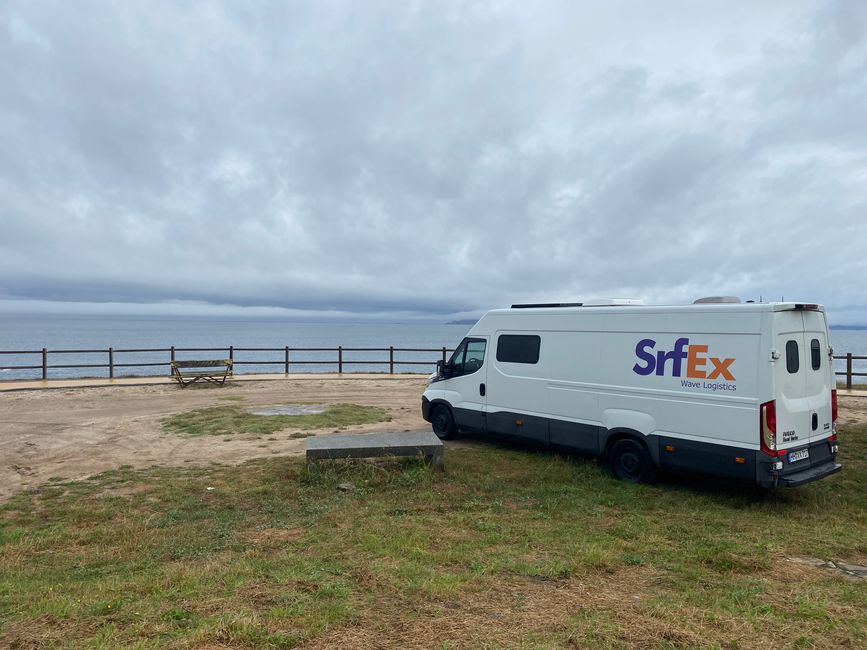
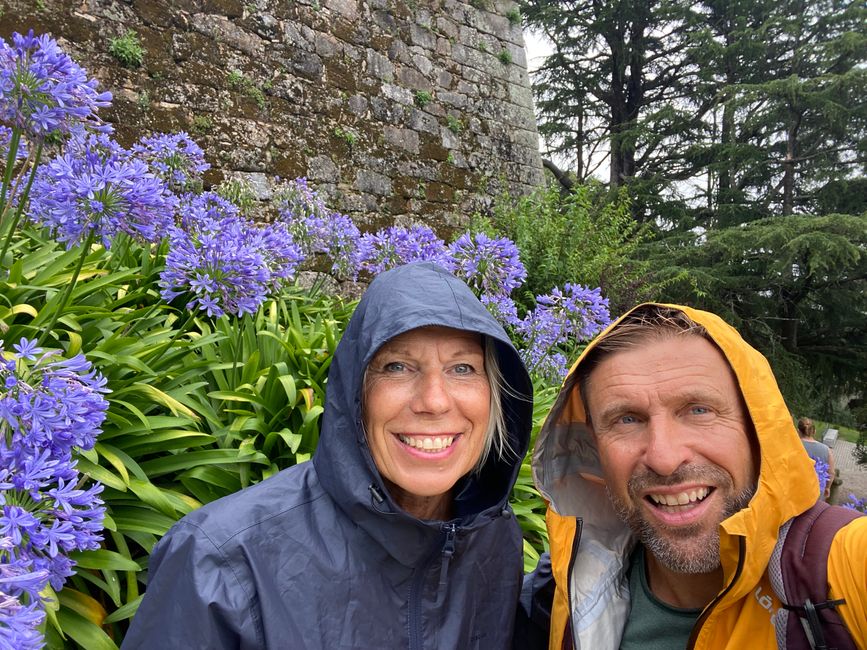

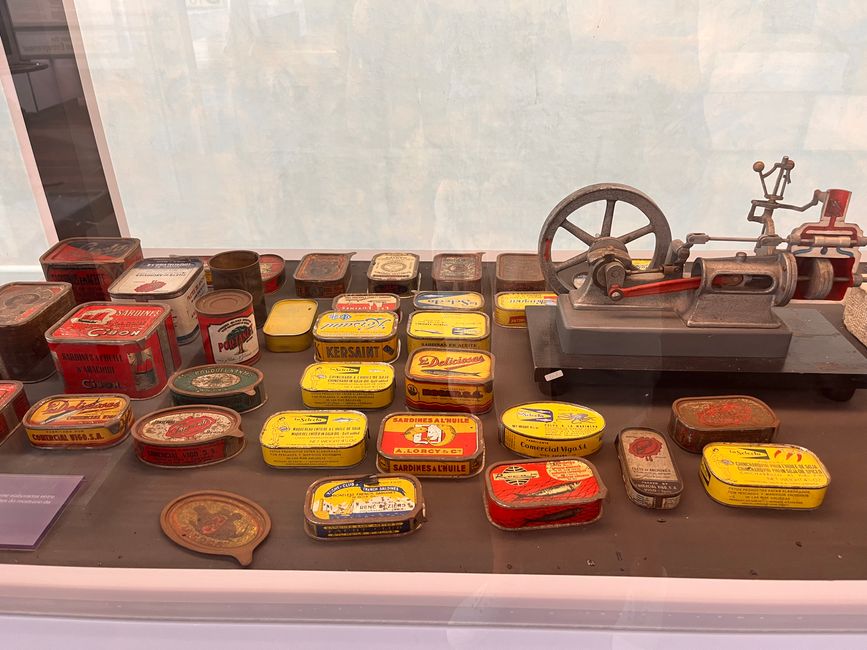
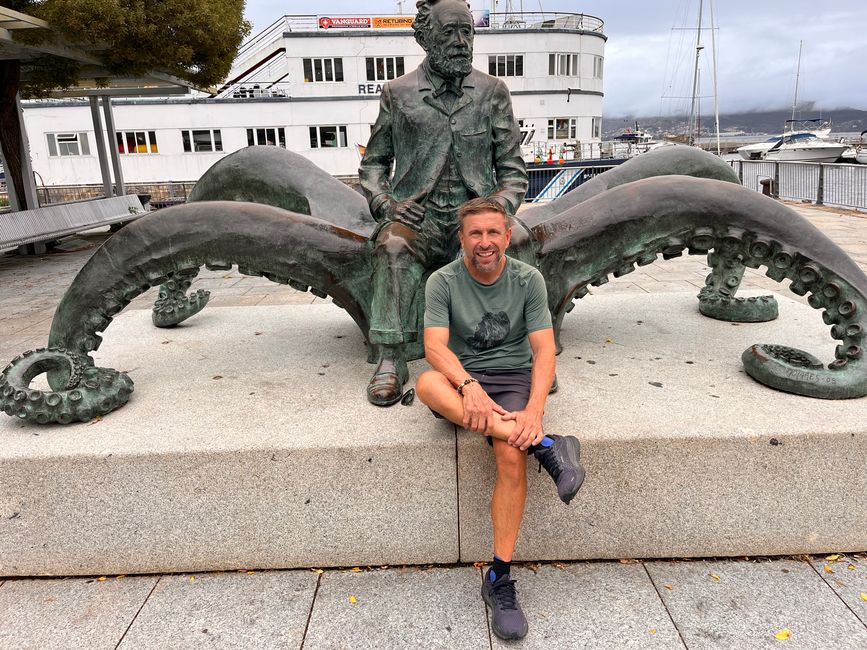

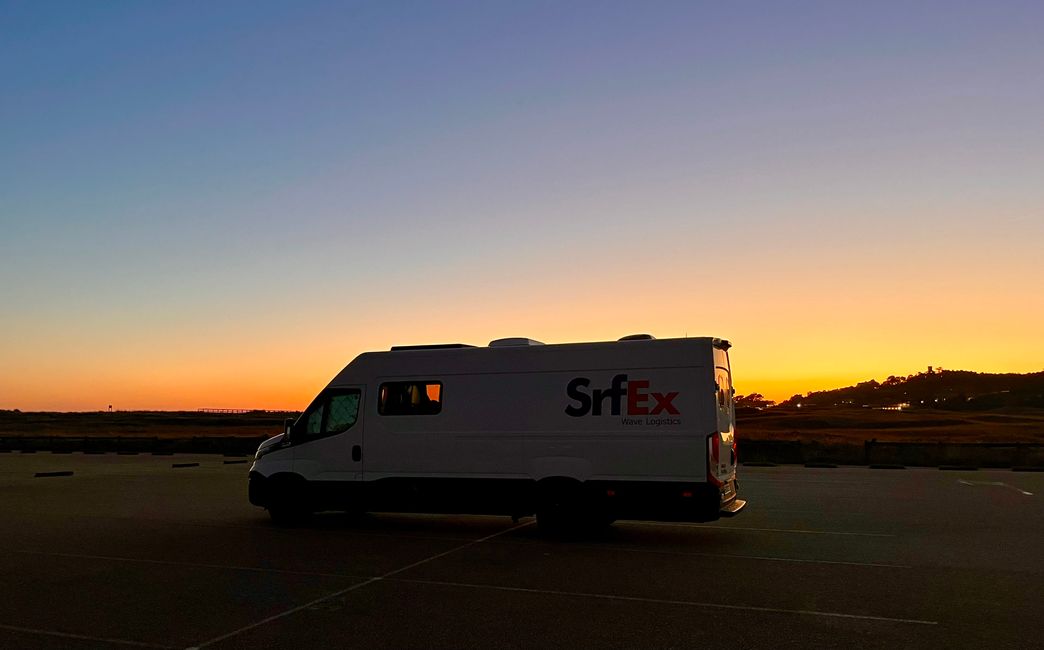
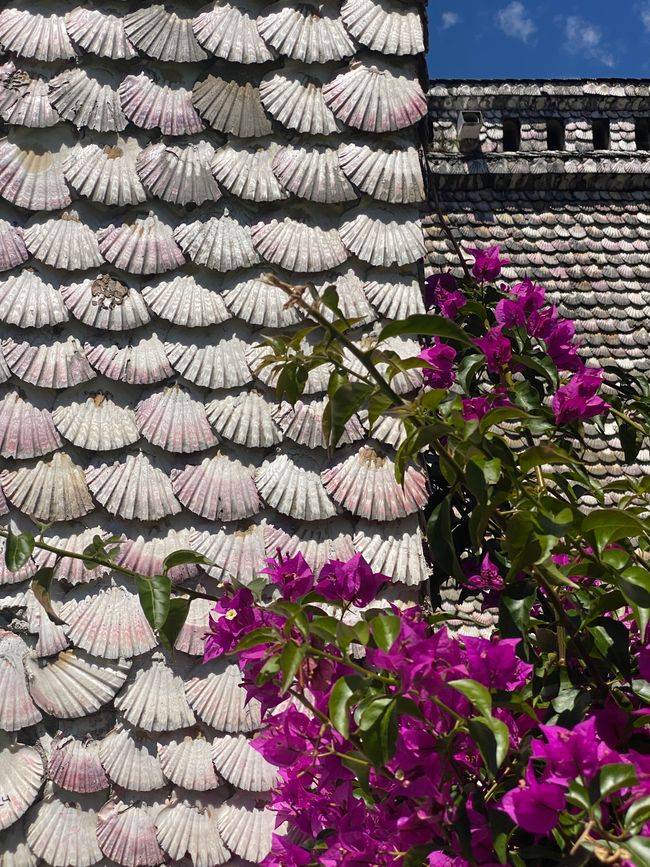
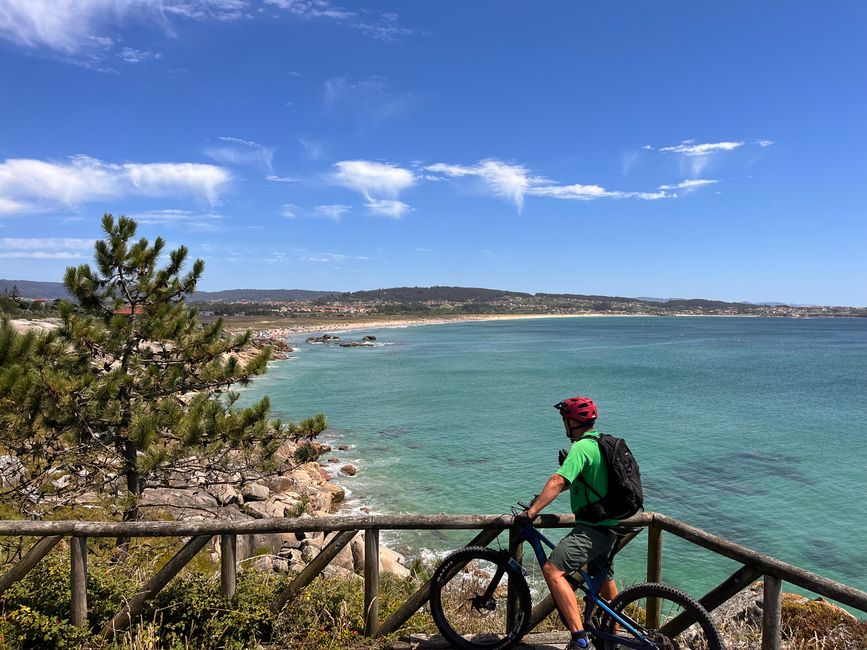

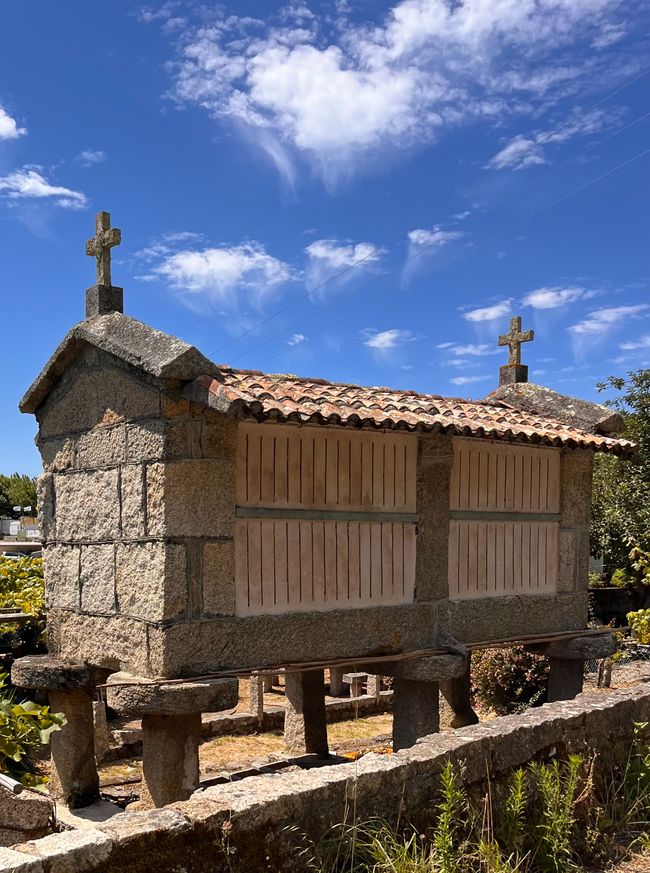
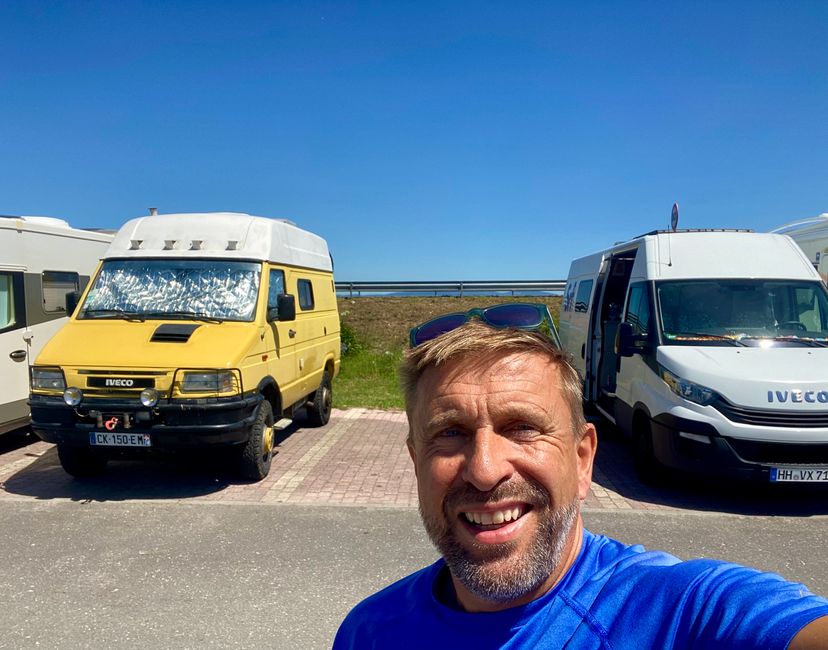

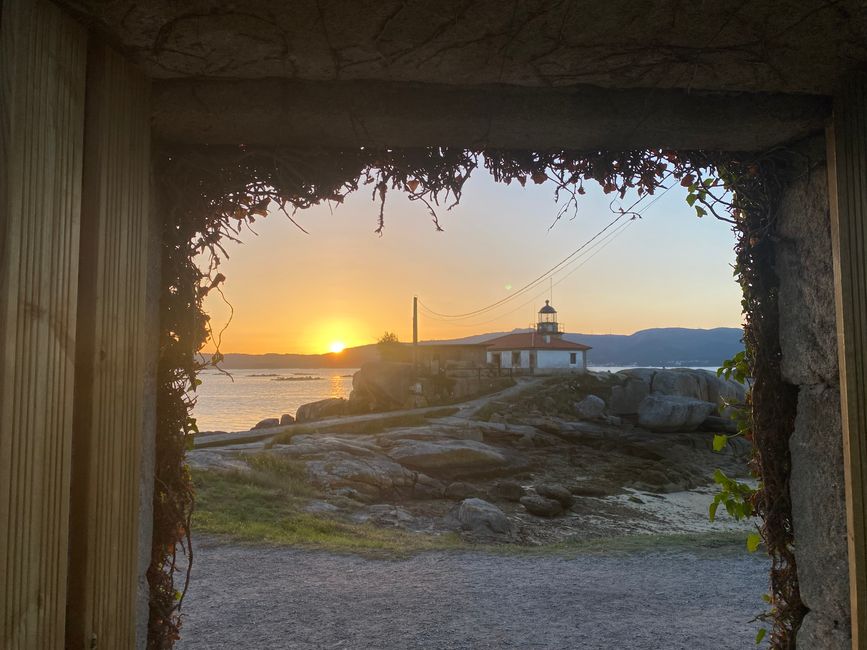

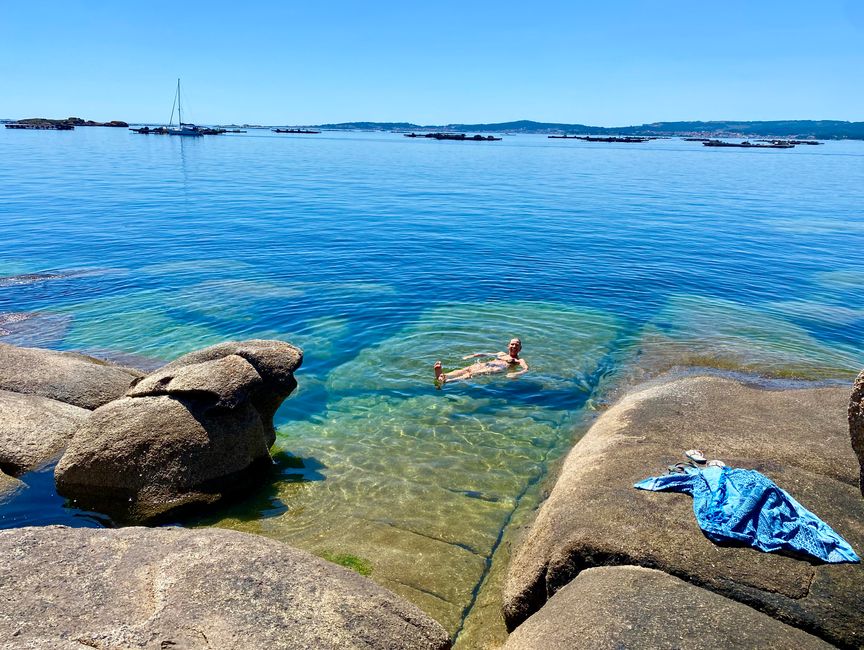
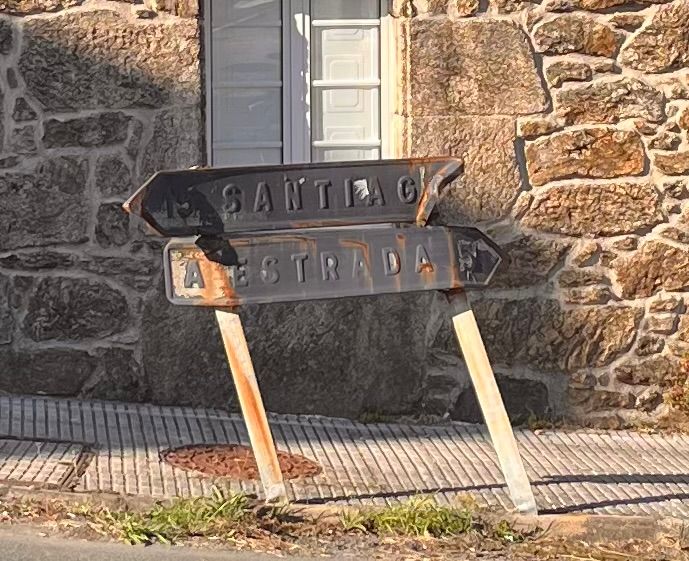
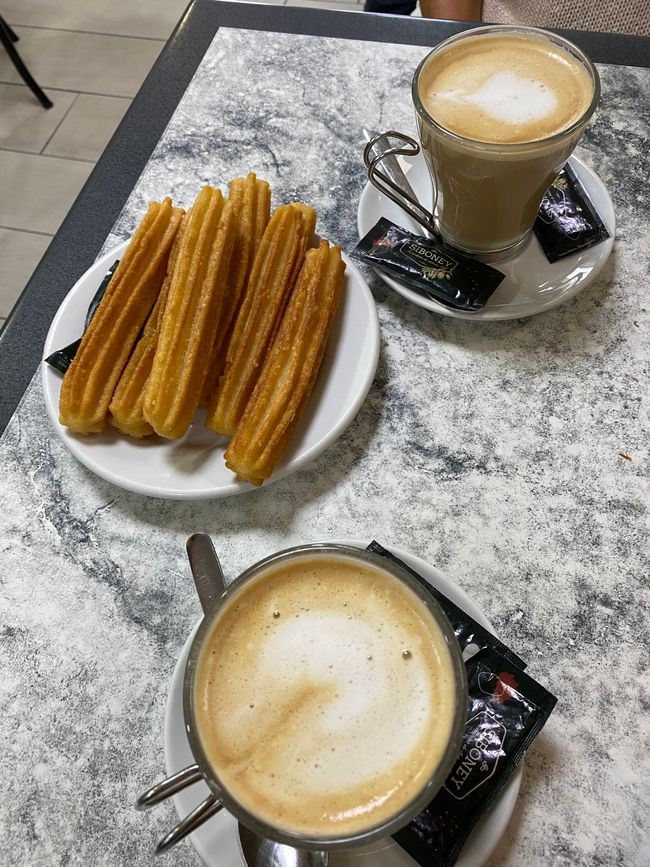

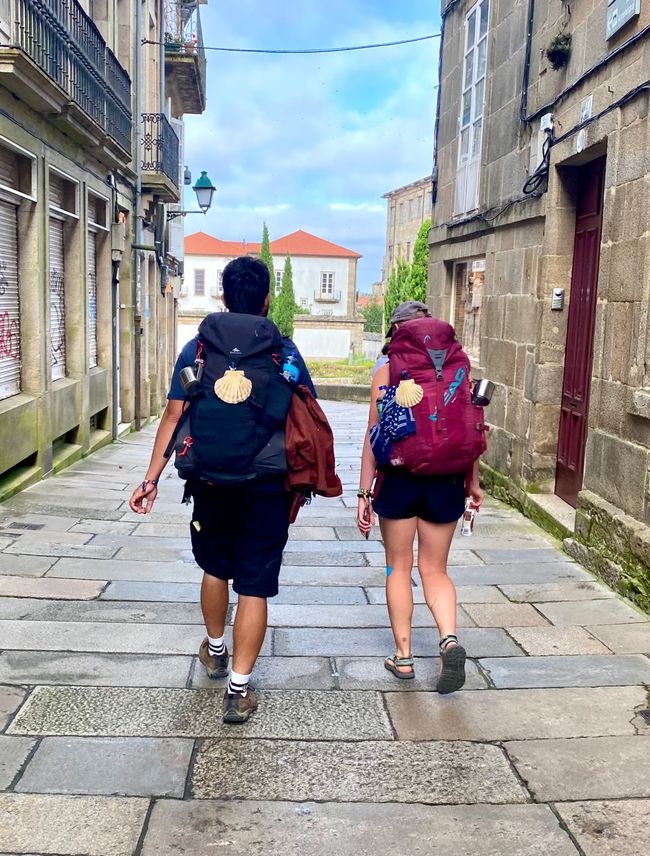
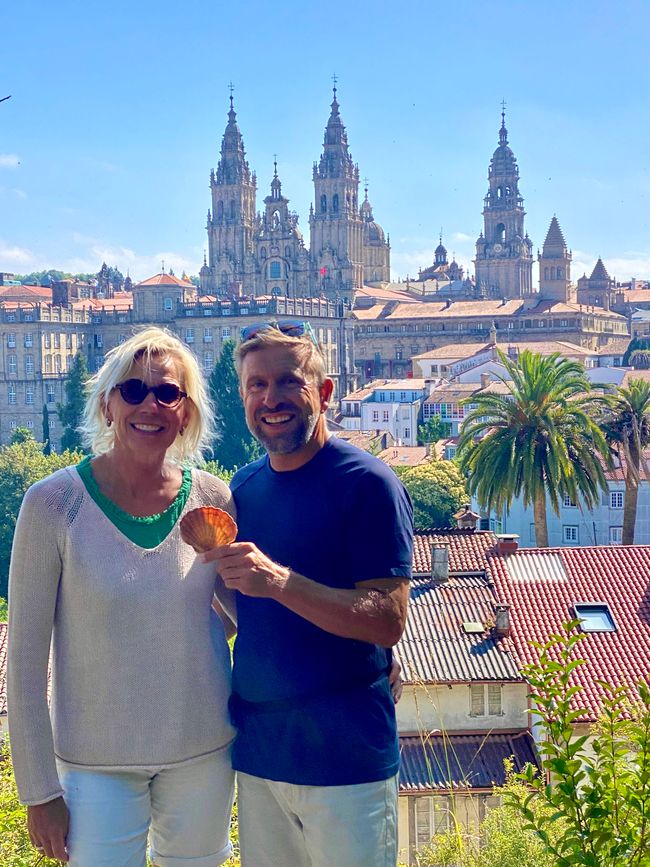
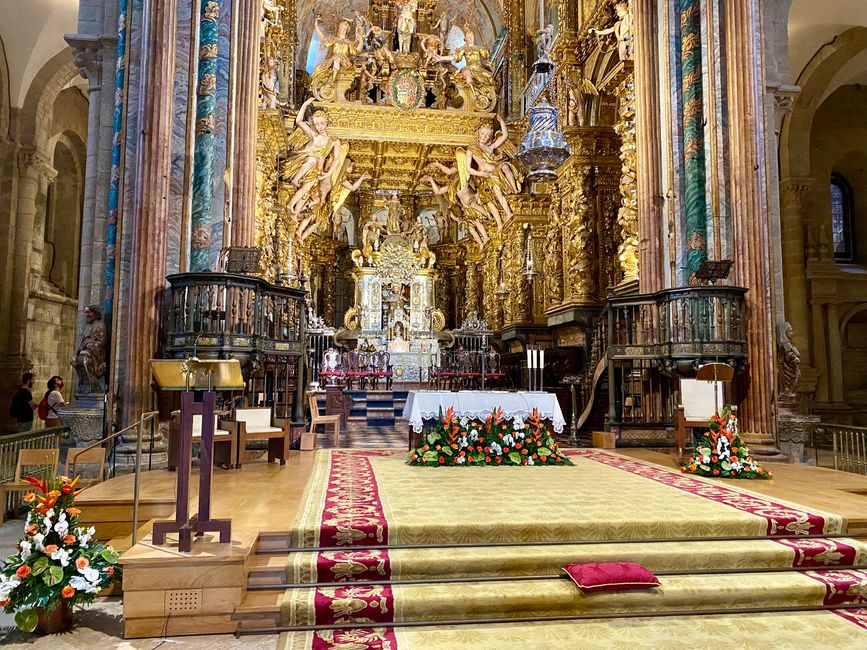
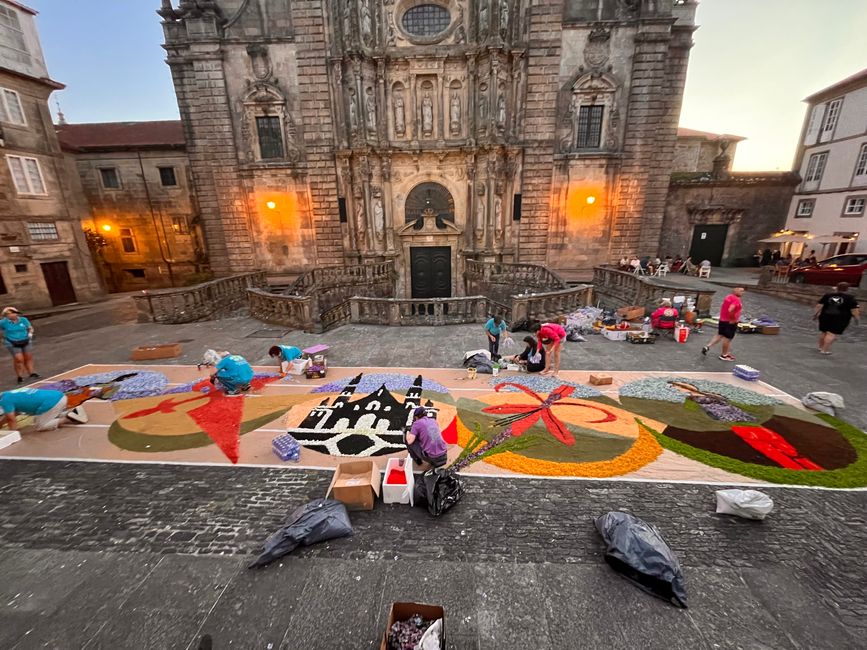
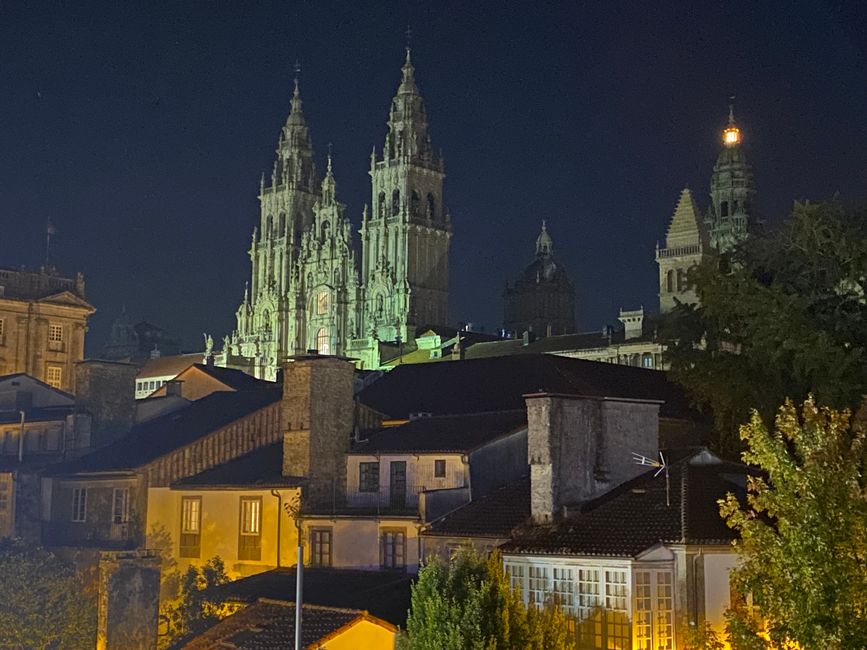
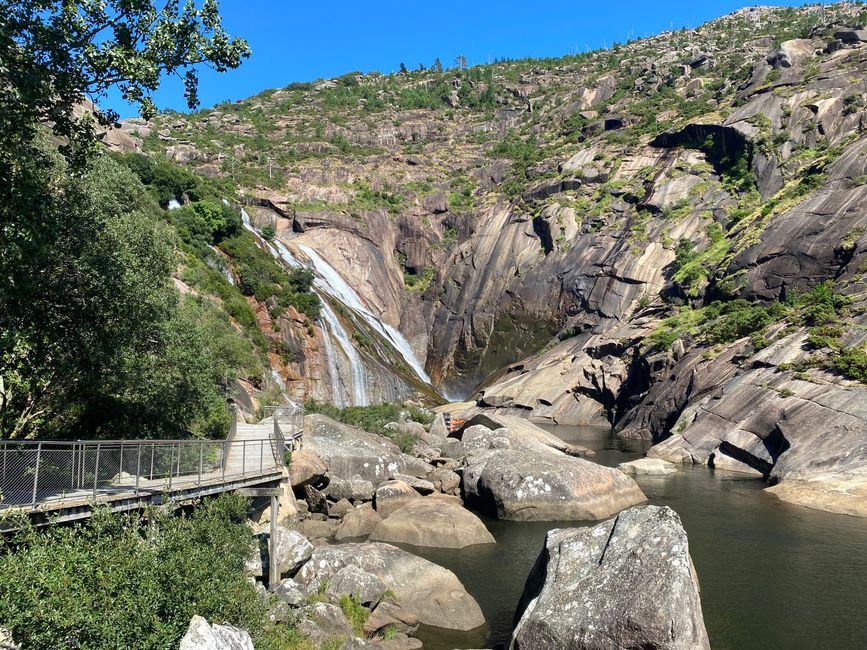
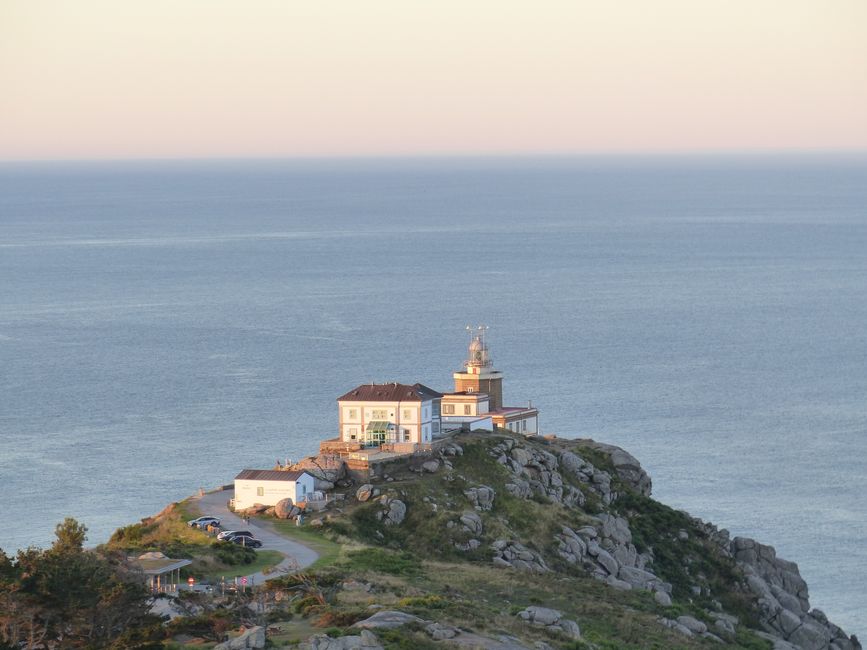
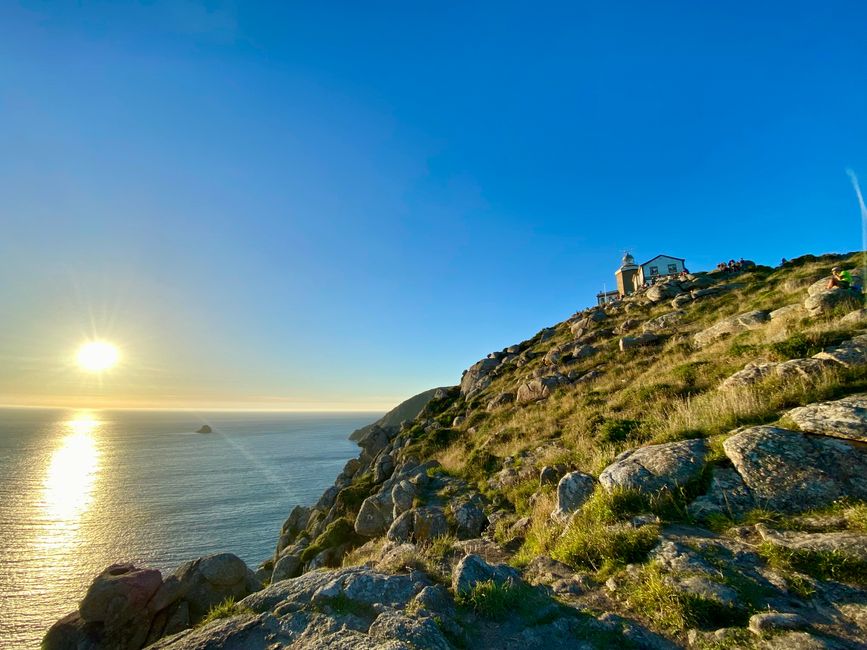
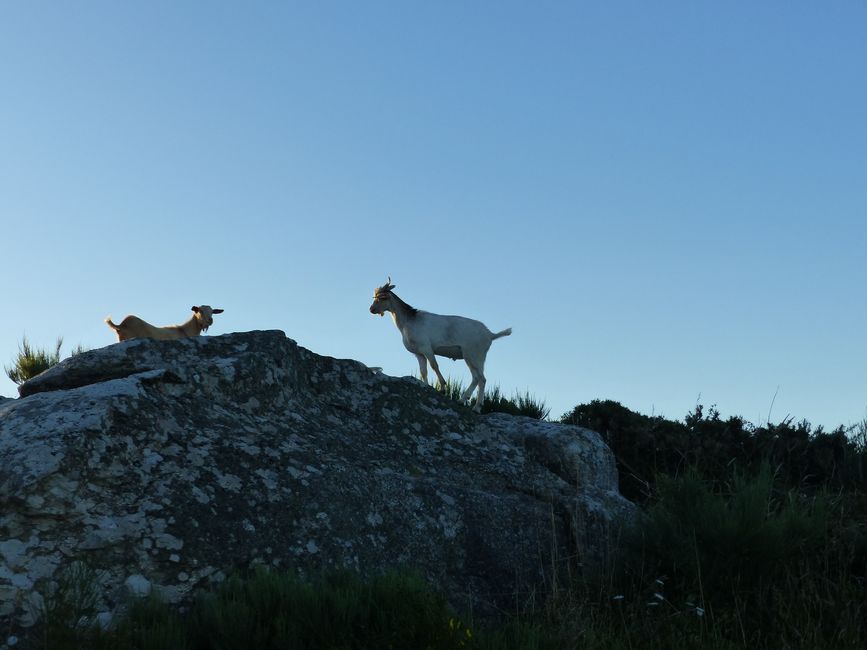
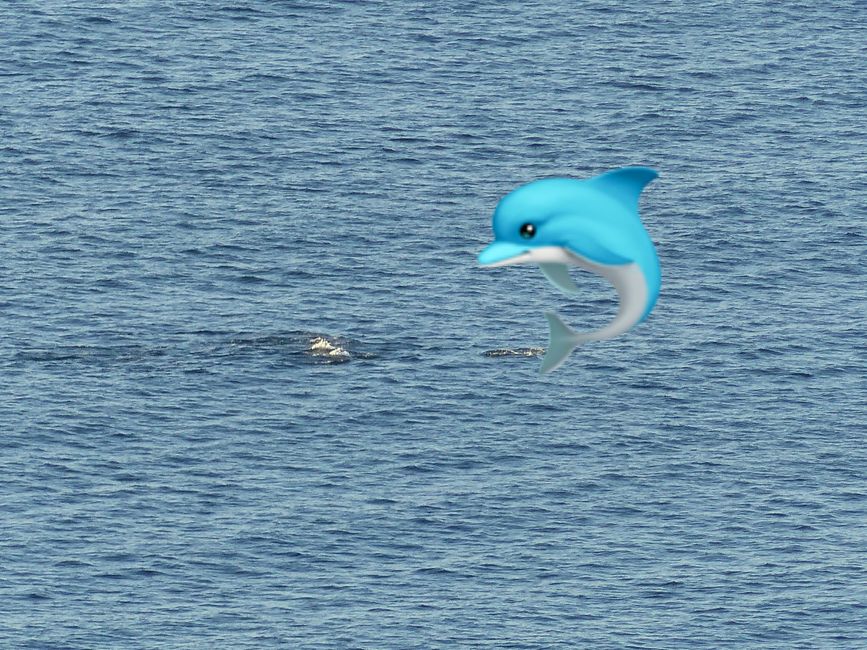
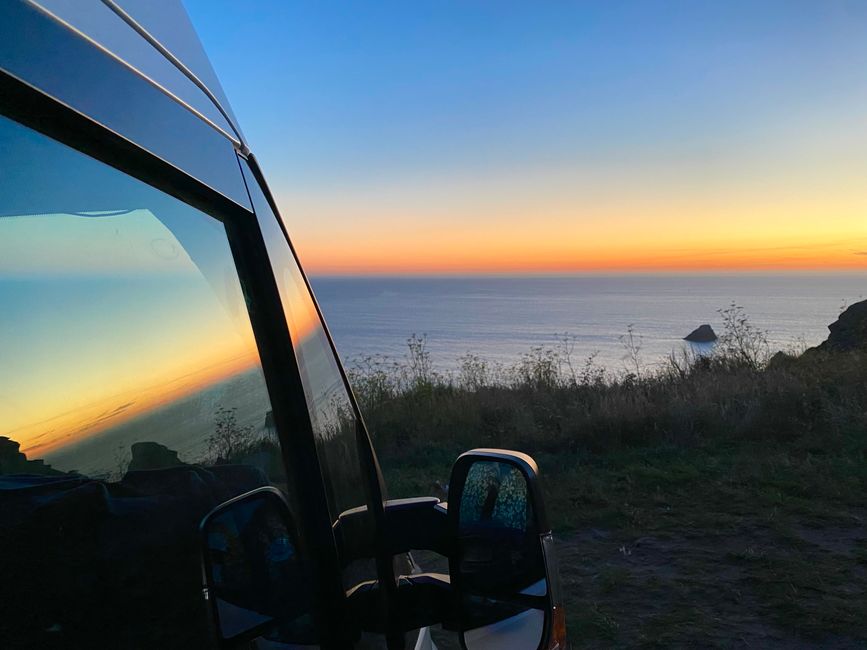
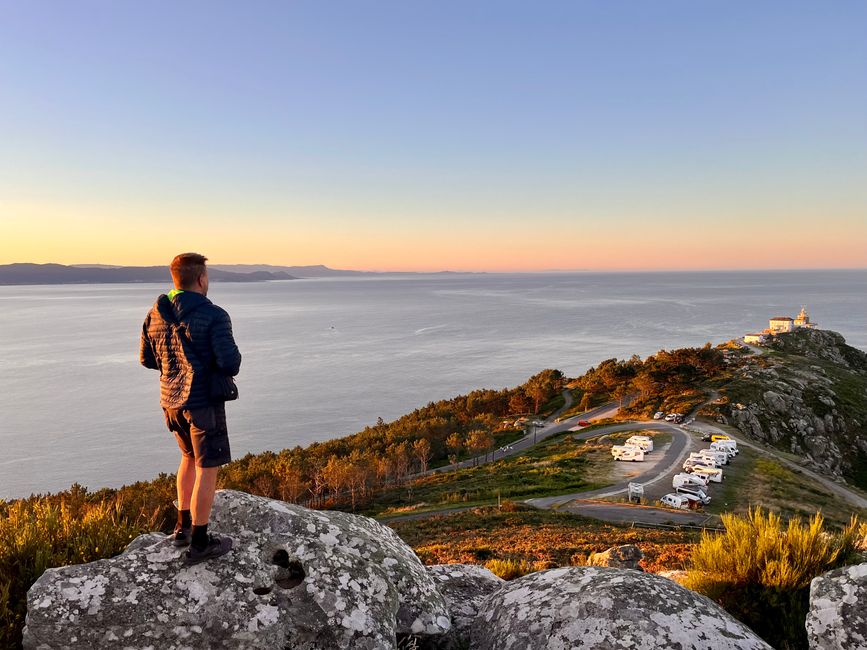
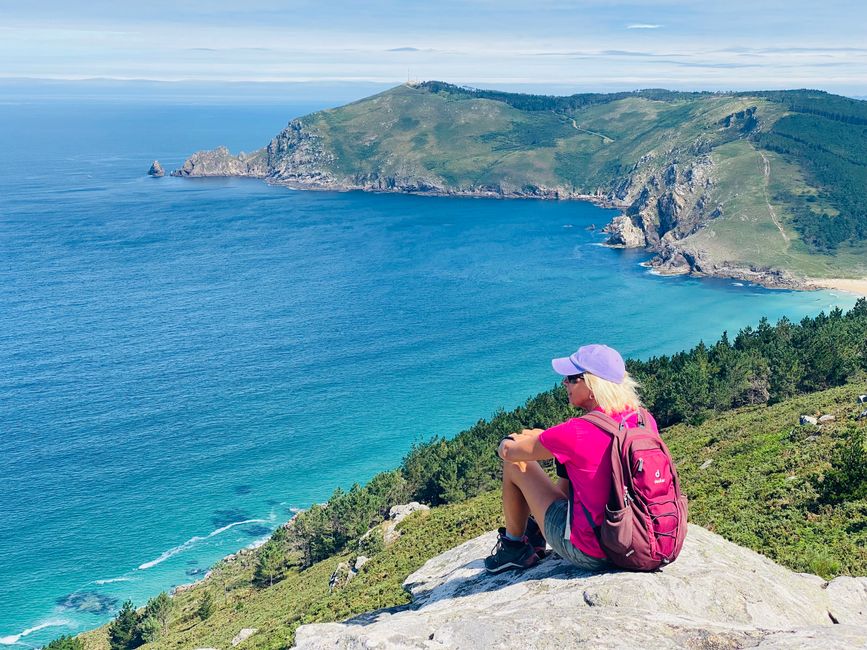
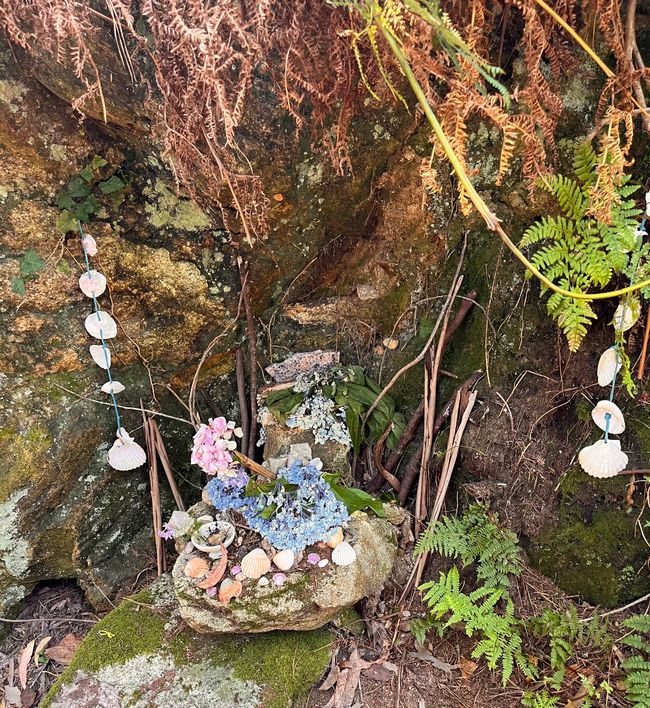
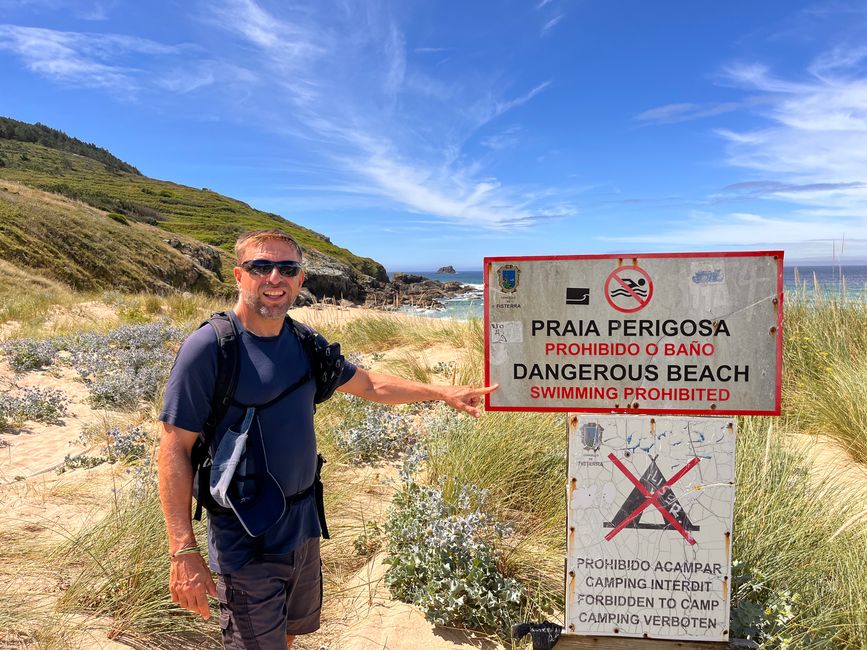
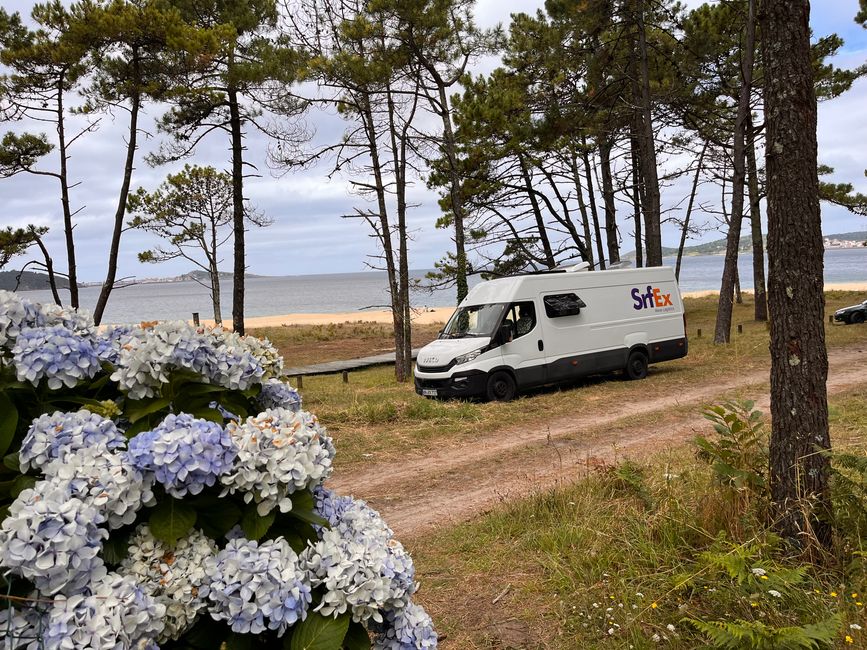
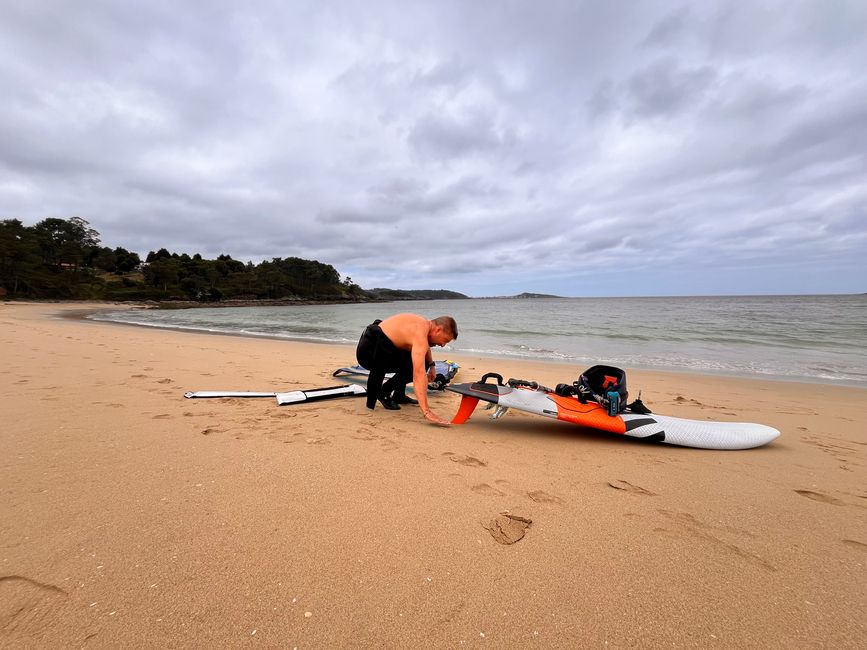
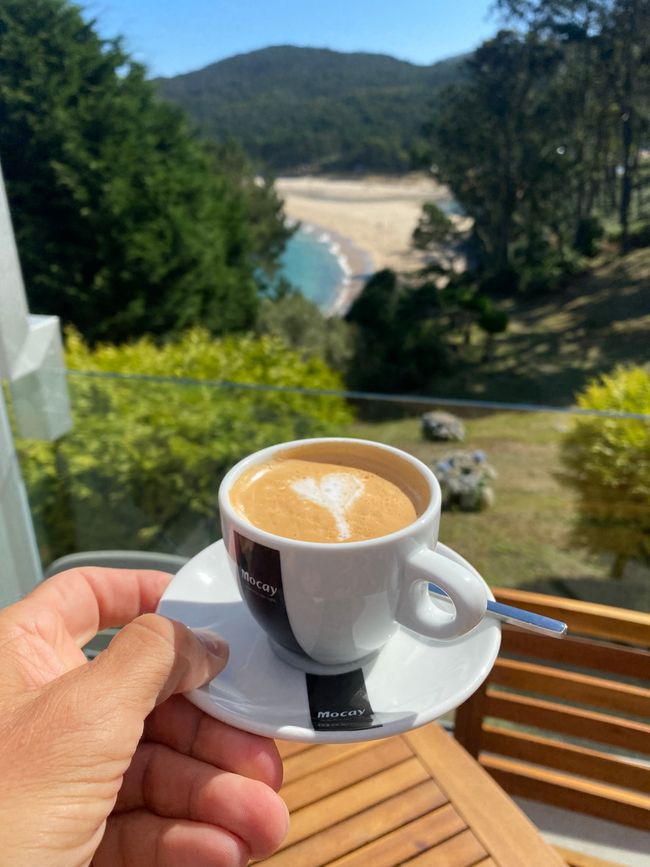
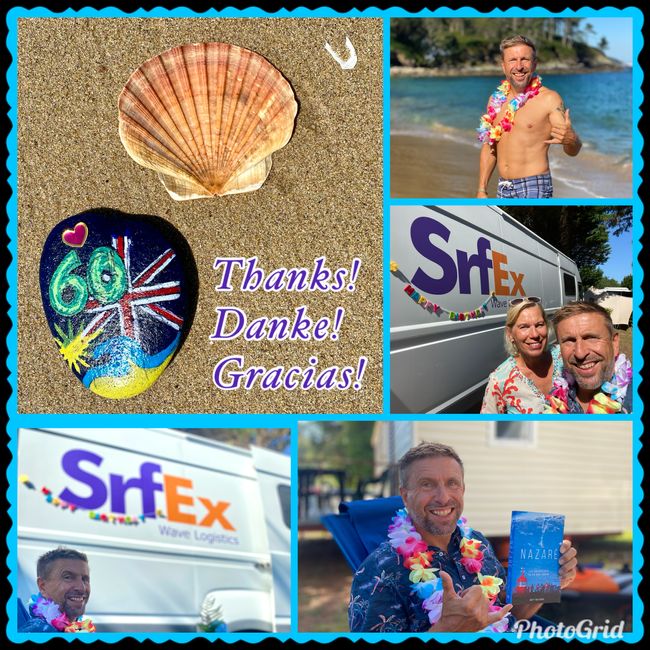
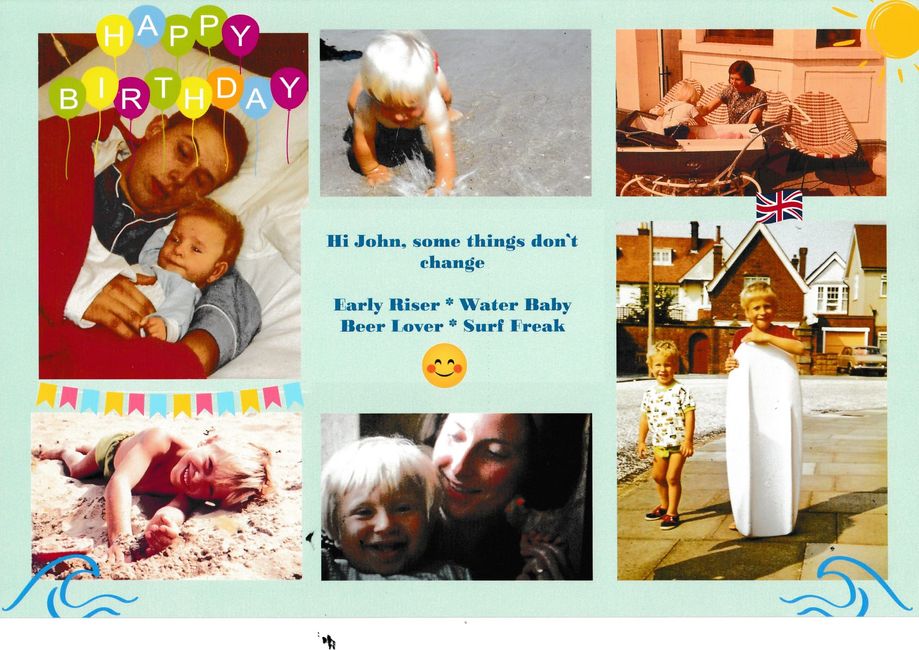
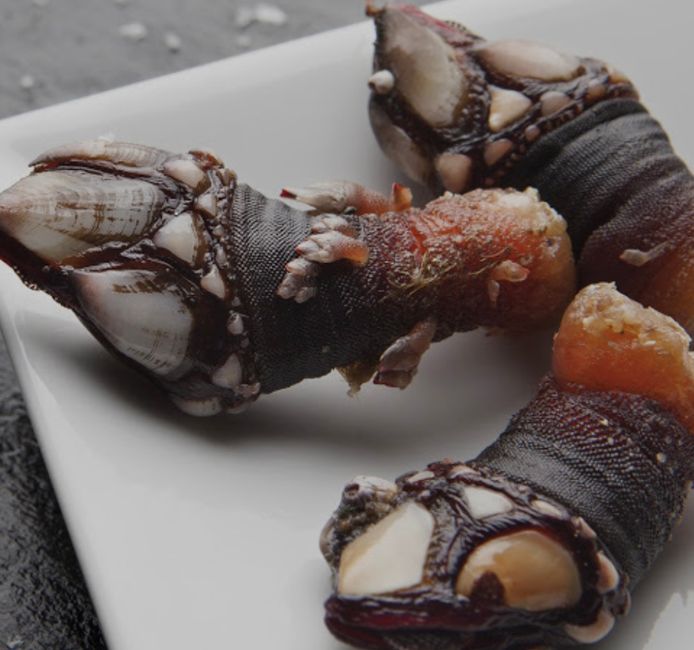
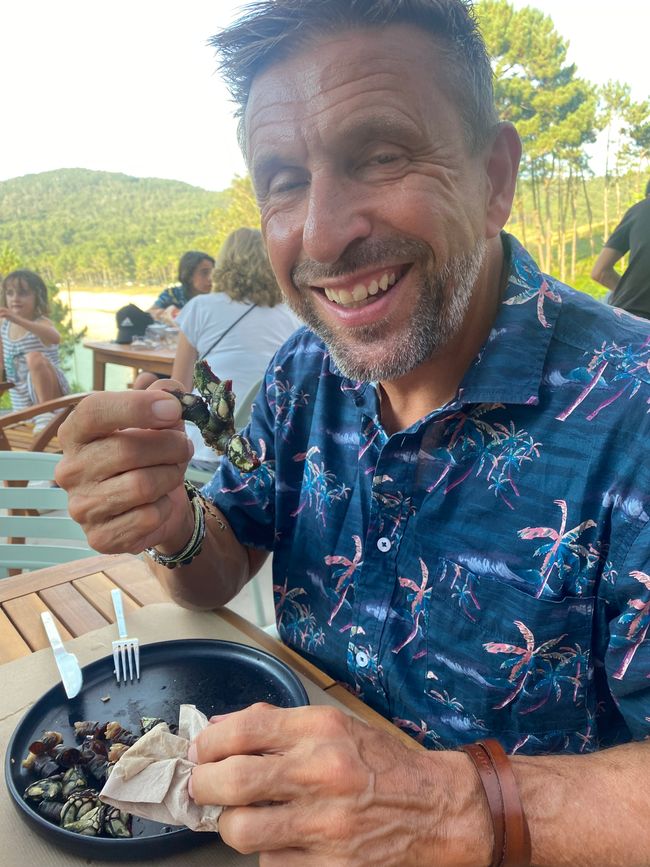
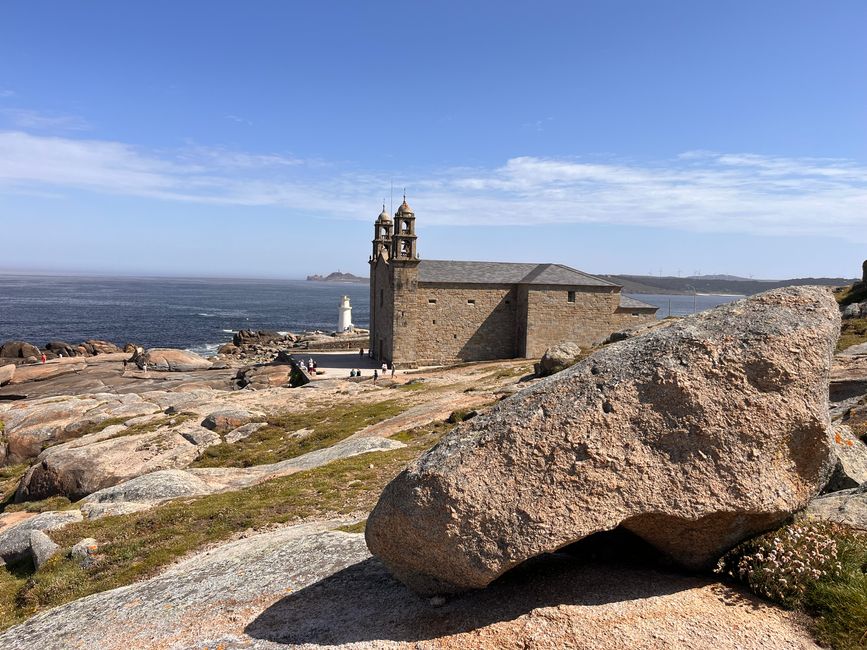
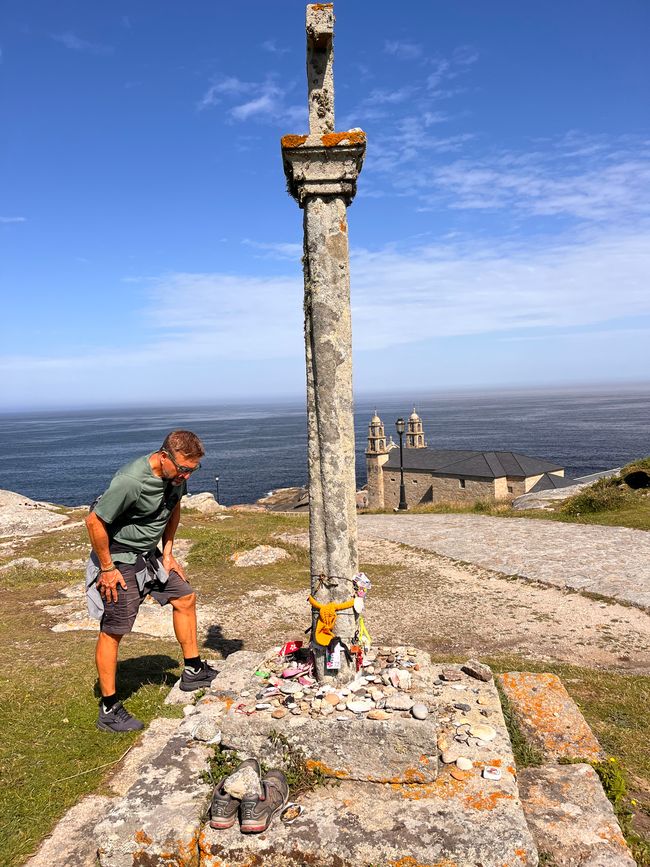
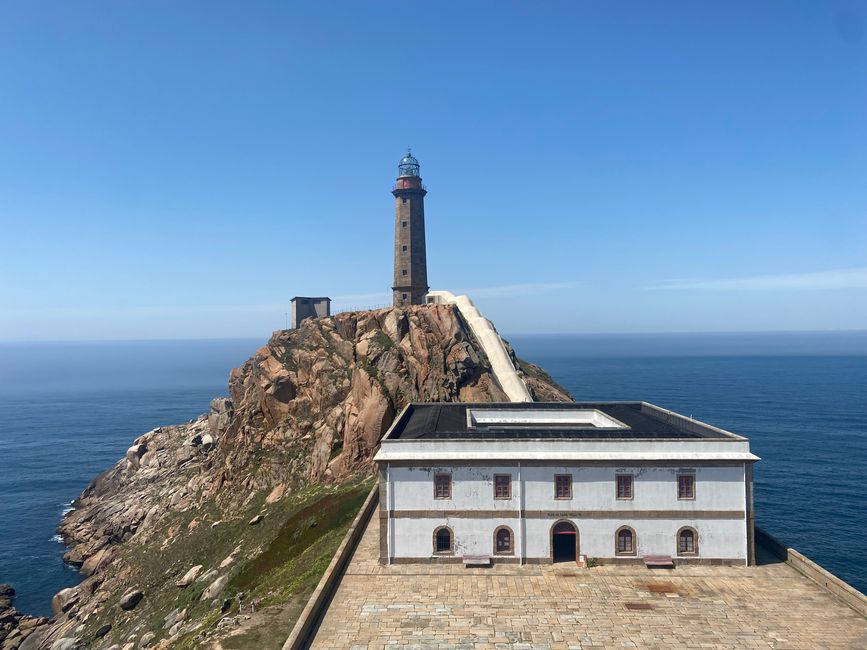

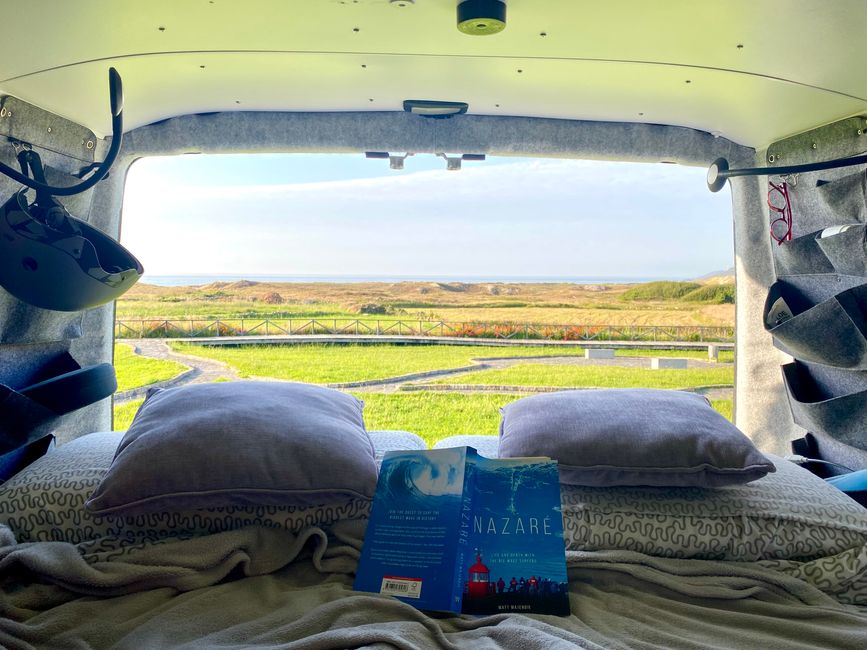
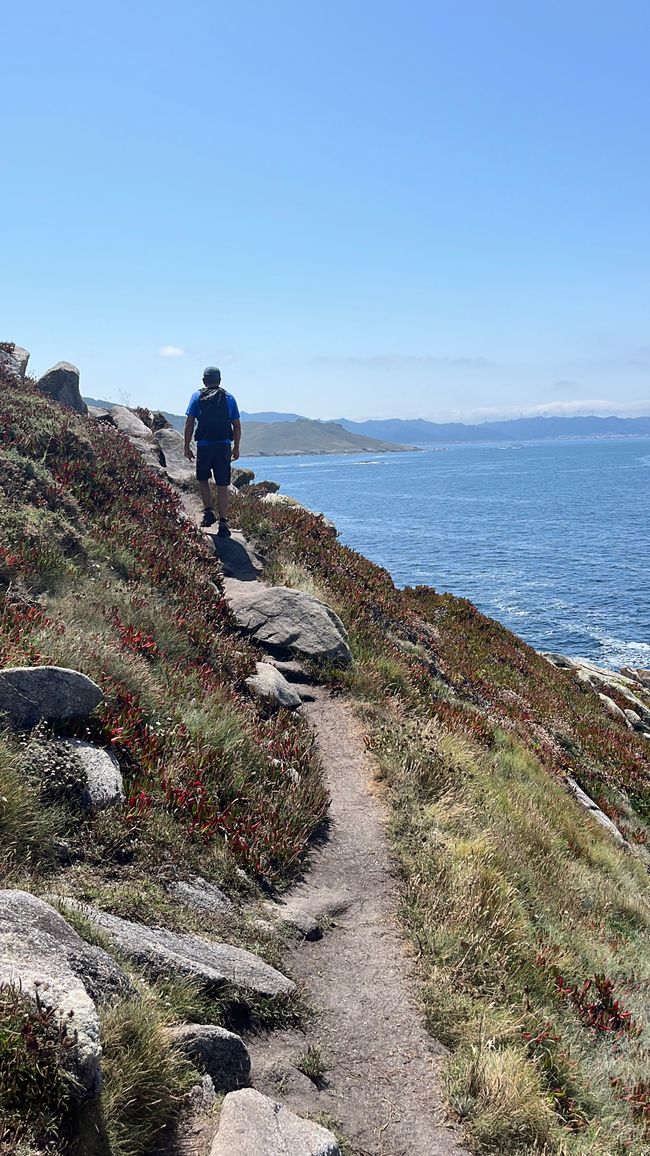
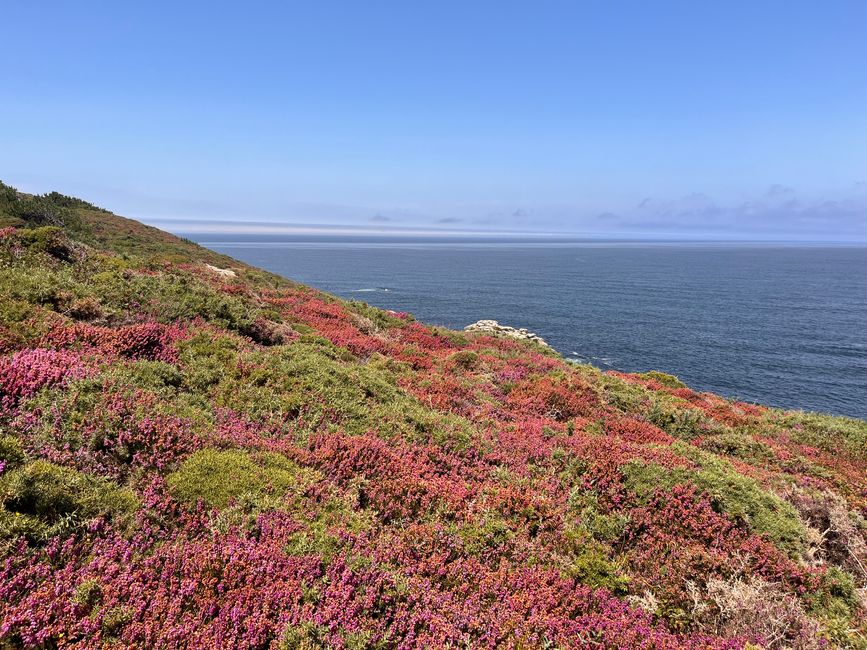
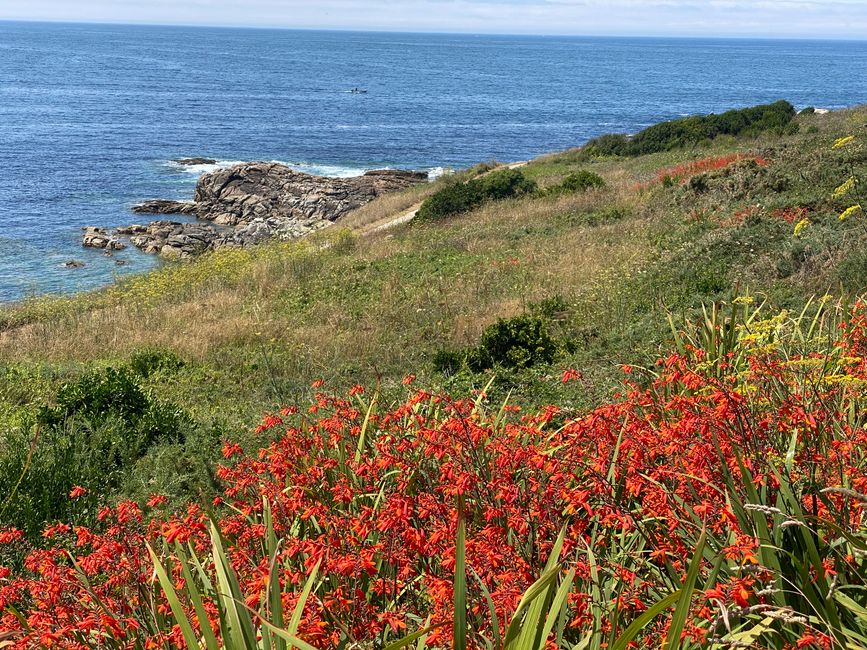
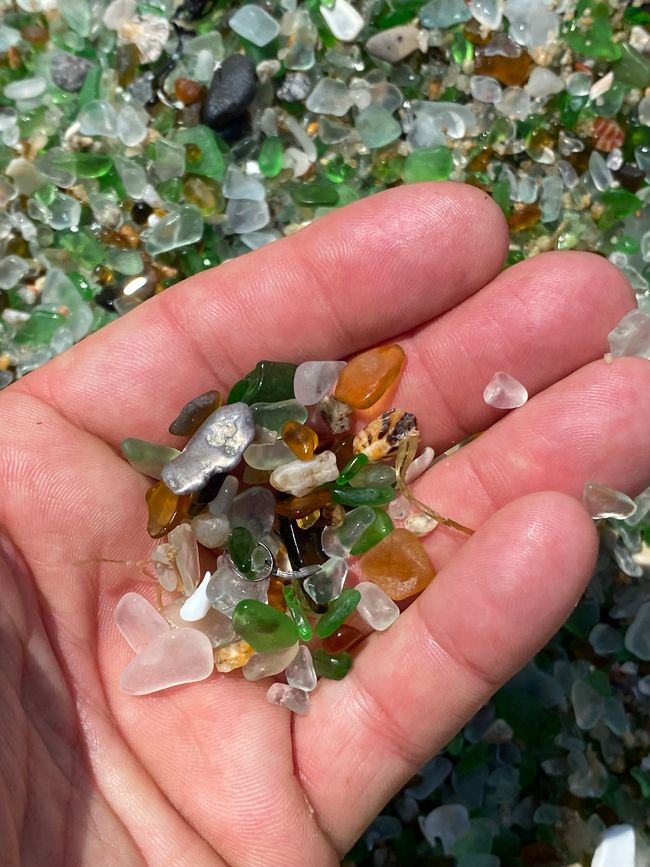
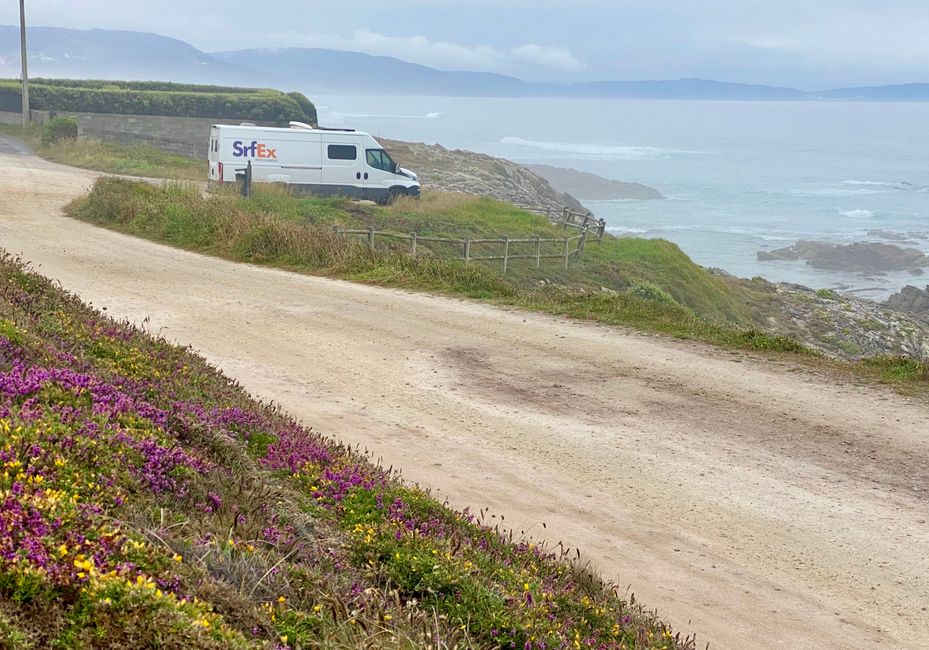
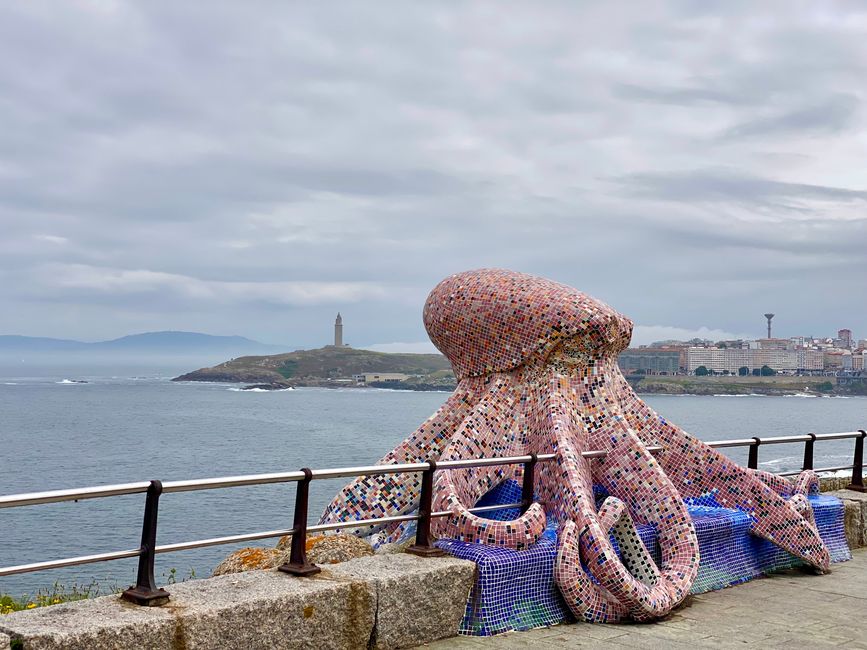
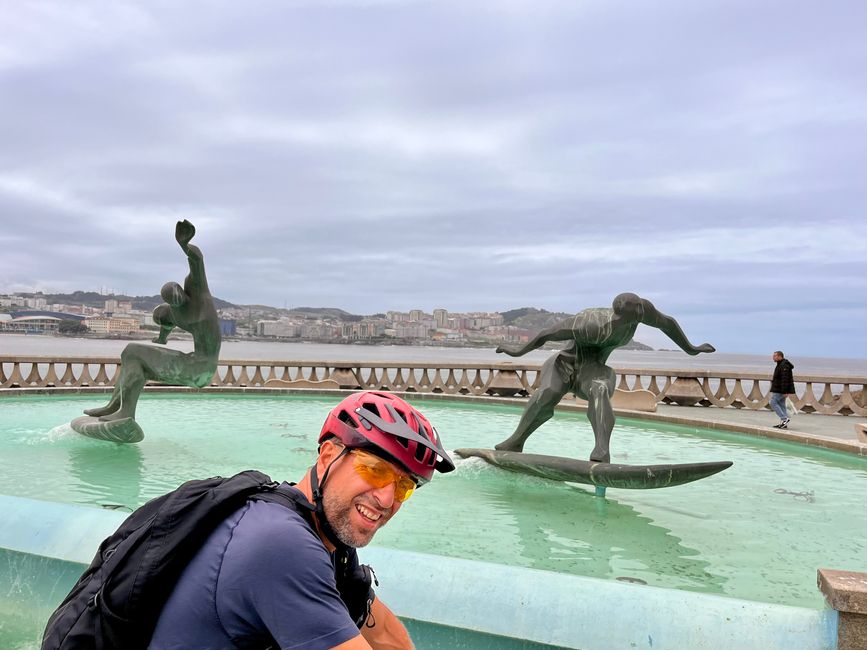
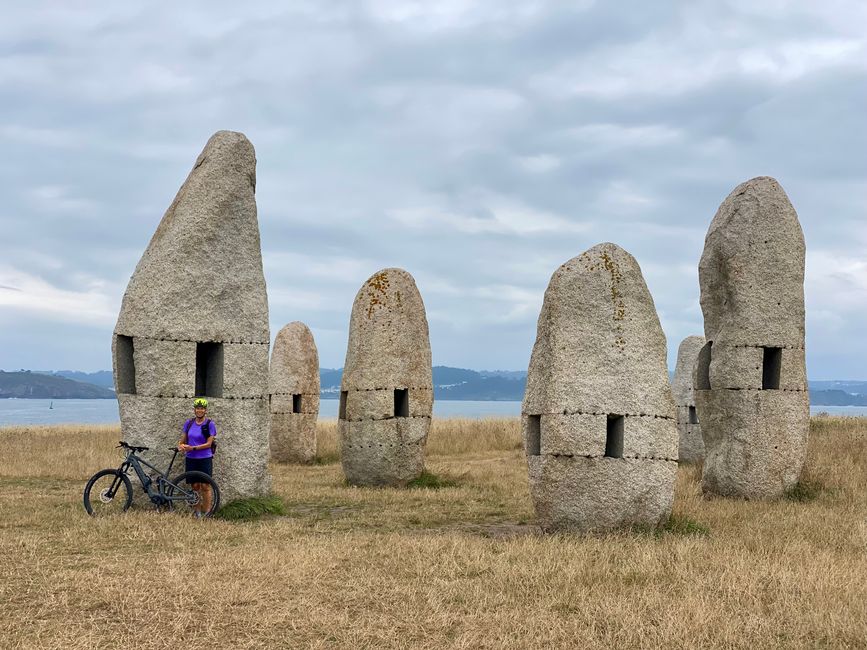
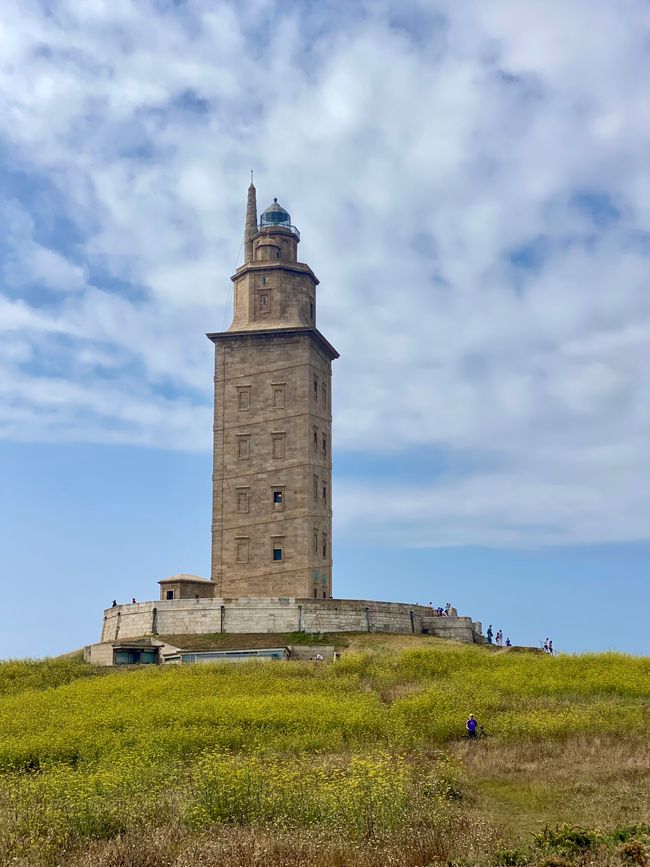
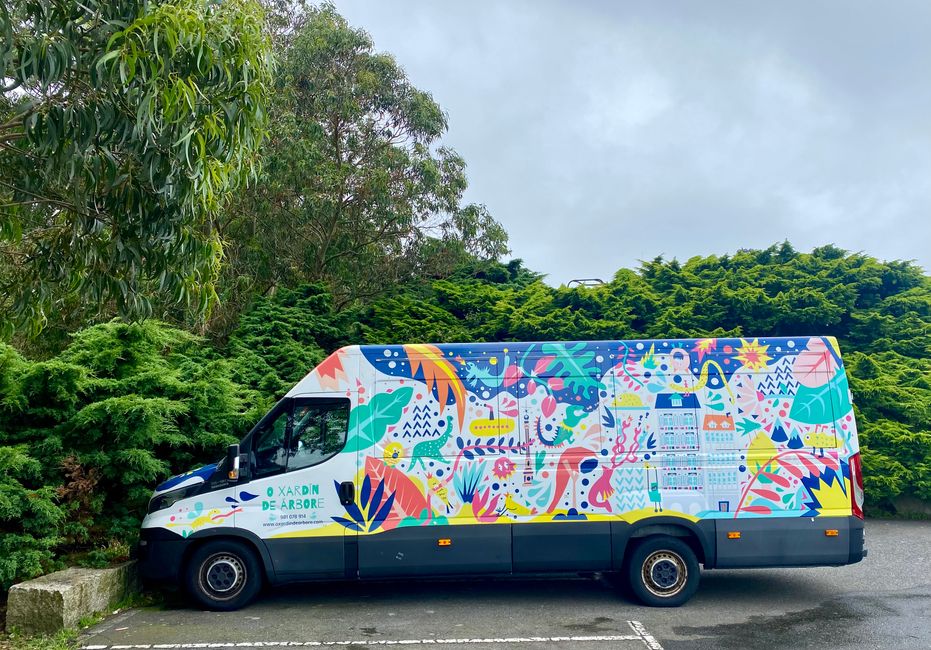
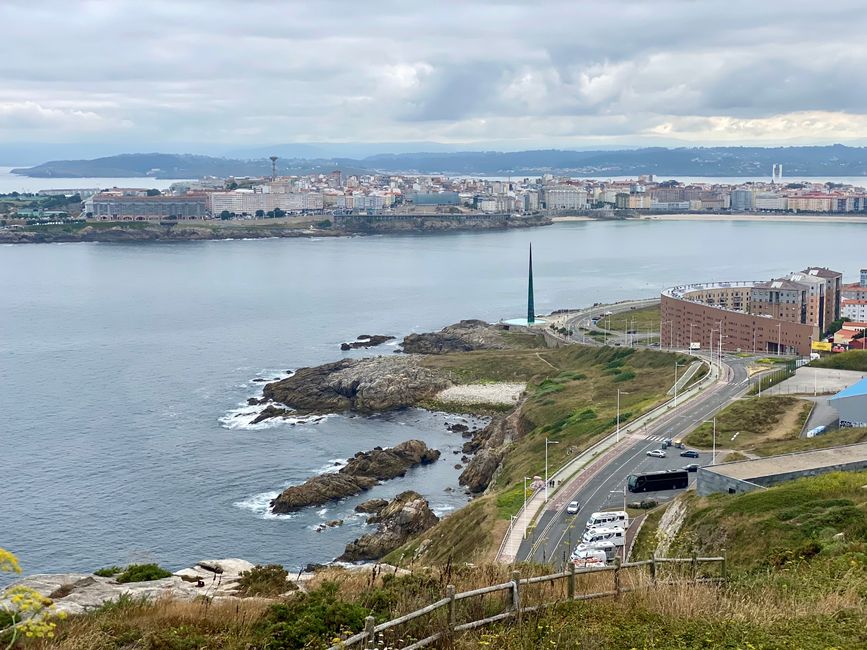
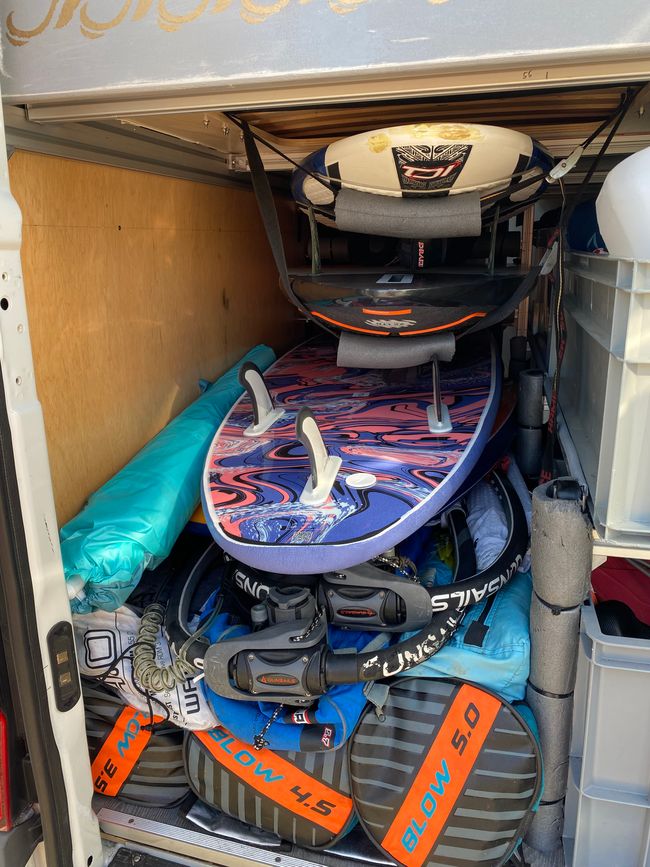
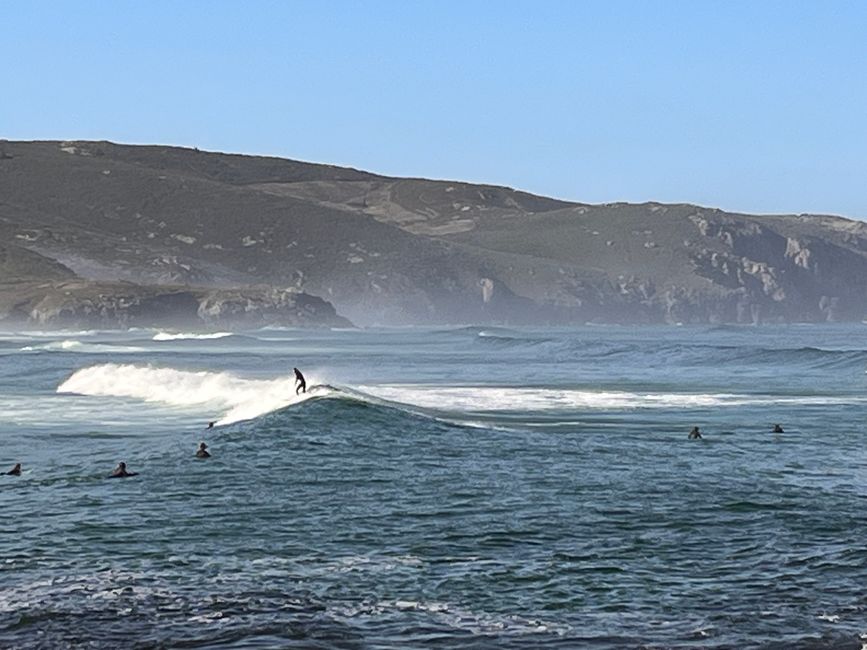
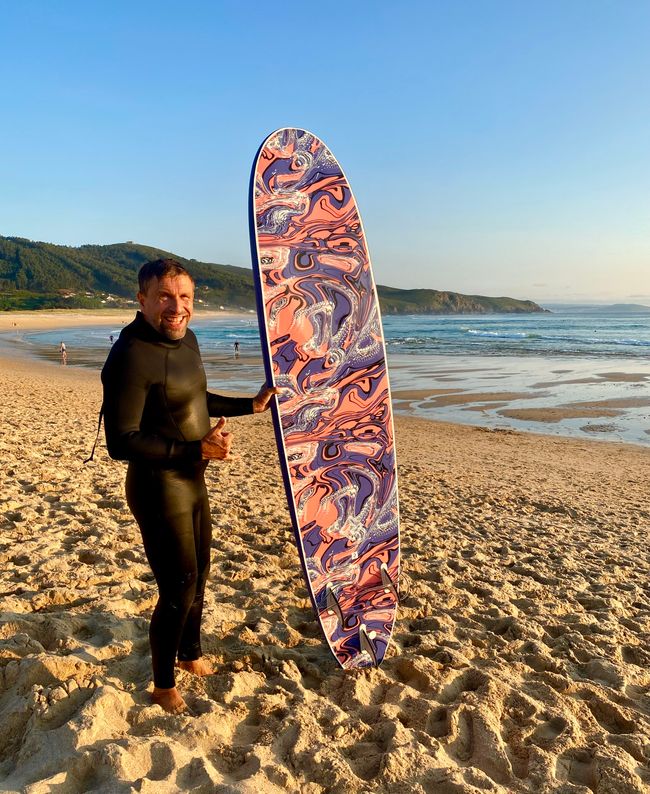
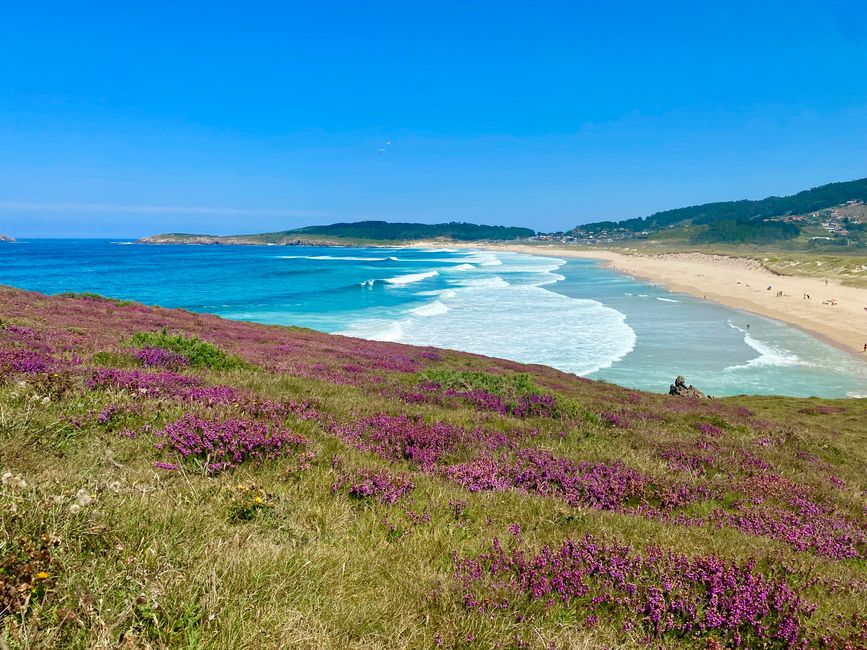
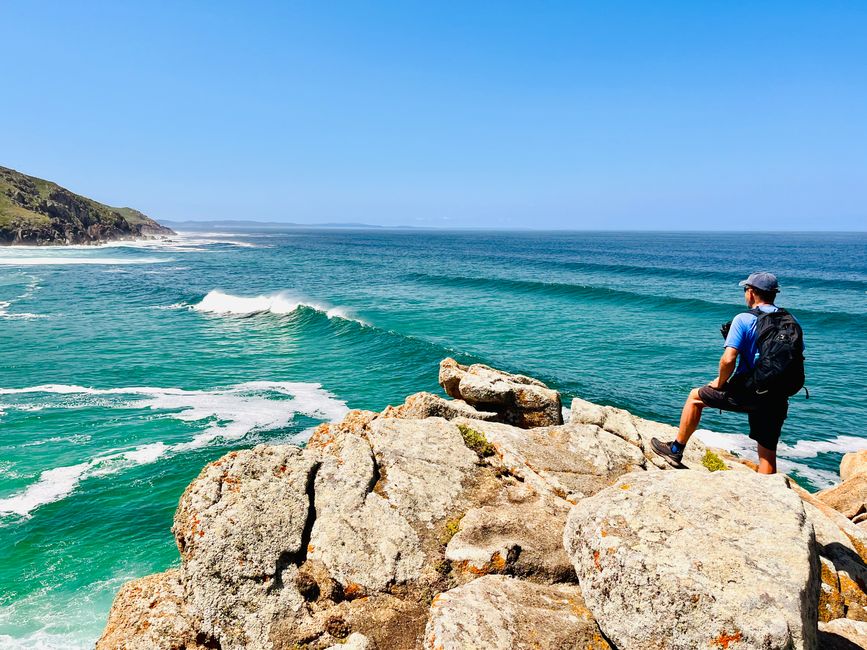
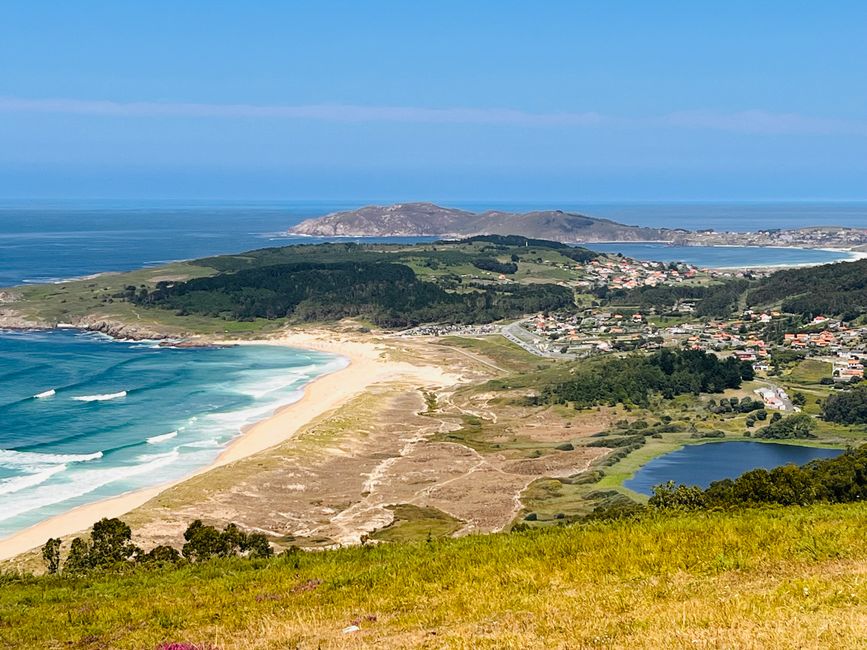
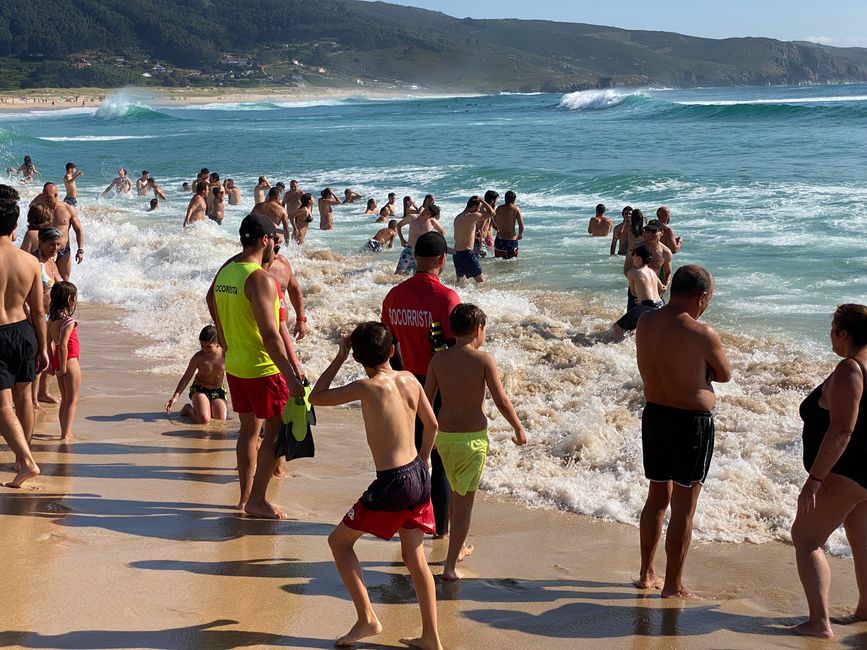
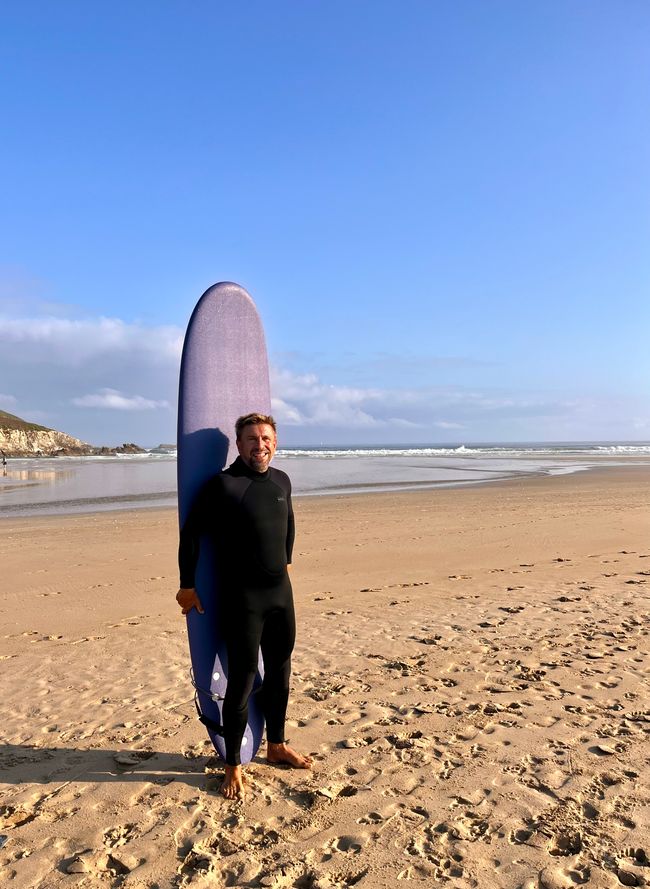
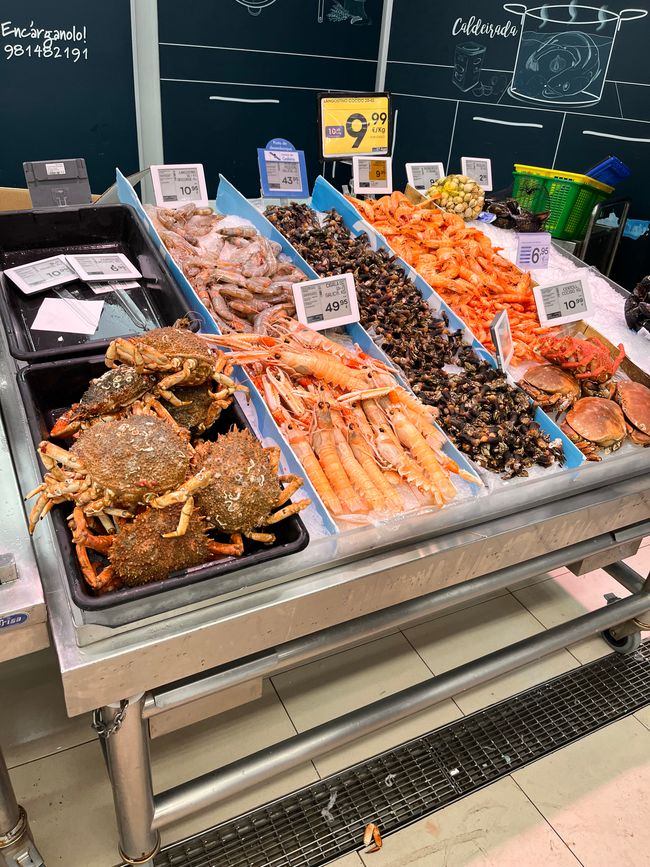
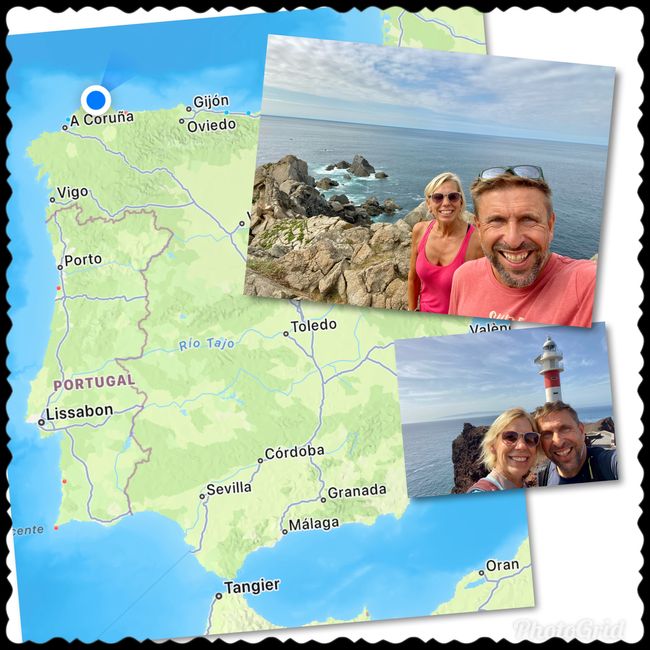
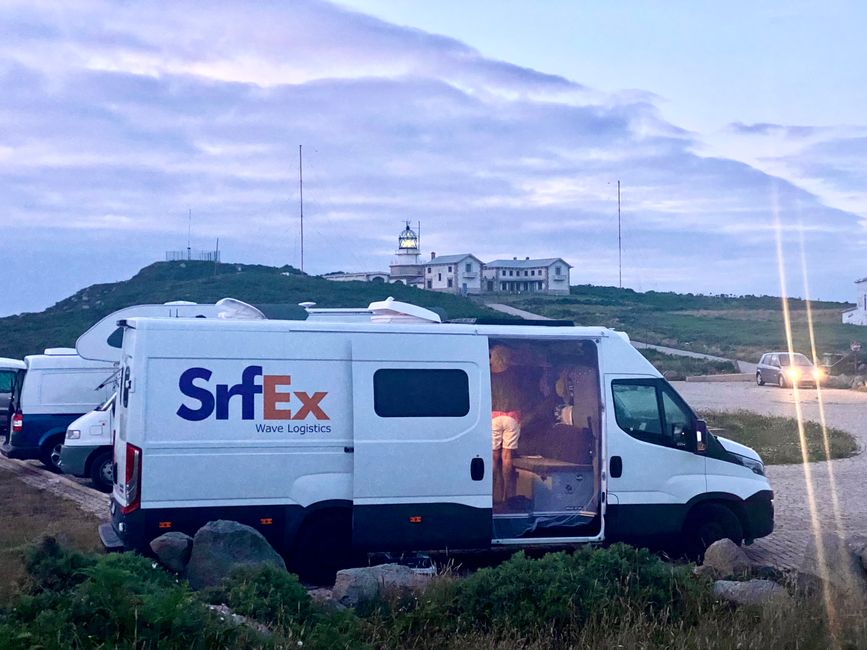
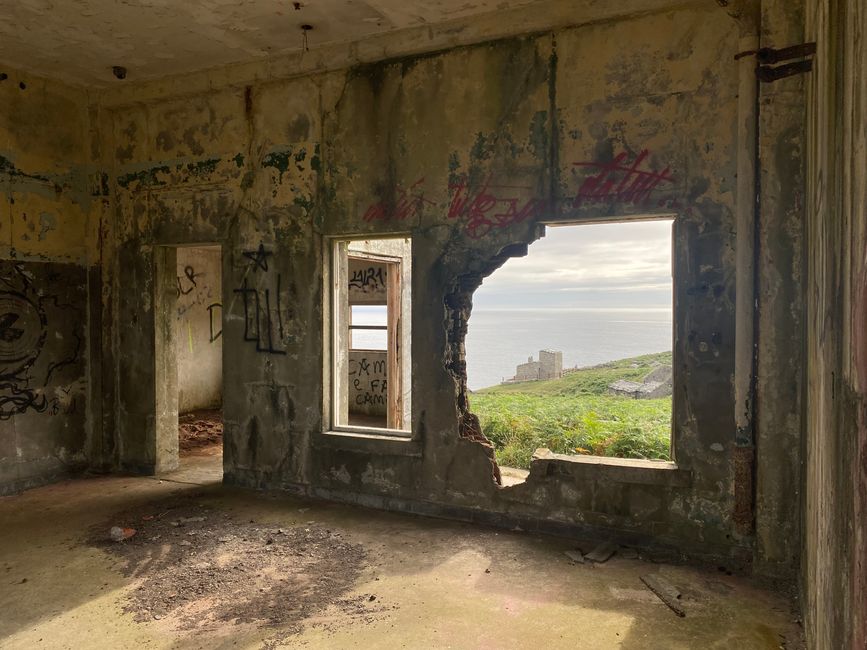
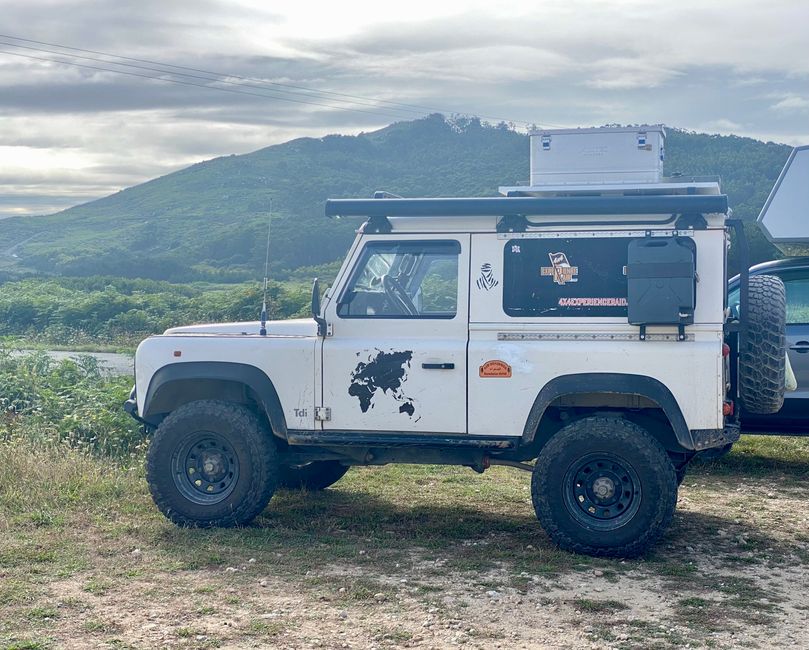

אַבאָנירן צו נעווסלעטטער
Personal log entry from the houseboat Betty HH-VX 717. It is the year 2024, July 19, 15:11. We have just left Portugal via the Rio Minho and find ourselves back in Spain, specifically in the autonomous region of Galicia.
Our first destination in Galicia is the well-known port city of Vigo, about 50 km north of the border. Already in the first kilometers, the landscape changes. The dune landscape of the Portuguese west coast gives way to lush green mountains with cliffs that immediately remind us of Ireland. We spend the first night in a parking lot between the coastal road and the cliffs near Baiona. The weather changes, and a large moonlit fog bank approaches us from over the sea. We are reminded of the horror film 'The Fog,' but survive the night unscathed.
The next day, it drizzles and is foggy. We thus start our Vigo sightseeing at the Maritime Museum of the city, where Vigo's centuries-old maritime history of fishing and wars is narrated. Part of the museum is also dedicated to the devastating oil tanker accidents off the coast of Galicia. The most recent being 'Prestige,' which sank off the coast in November 2002 with 80,000 tons of crude oil, resulting in a huge environmental disaster.
We would have liked to stay longer, but in Spain, museums also take a siesta, and all visitors must leave the museum at 1 PM for 3 hours. Logically, this also applies to all restaurants, and we wander hungrily through the (not so attractive) Vigo. The only thing that excites us is the bronze statue dedicated to the writer Jules Verne at the harbor. Vigo plays a significant role in his novel '20,000 Leagues Under the Sea.'
Our next stop is the peninsula O Grove. On the land strip leading to the peninsula, a former runway for airplanes has been transformed into a huge parking lot. We spend the night here and finally have the agony of (parking lot) choice. A bike tour takes us around O Grove. Along the way, we find a church entirely adorned with scallops (allegedly for weather protection)! In fact, the scallop is becoming increasingly prevalent here near Santiago de Compostela. What we did not expect were the many large sandy beaches in Galicia. Due to the rugged coastline, there are beaches directly exposed to the Atlantic, but also many sheltered beaches with calm waters. In Galicia's 'fjords,' a lot of fish and shellfish farming take place.
Just north lies the Illa de Arousa peninsula. Our Park4Night (P4N) app has recommended that we spend the night in the parking lot of a beach restaurant. It only costs a glass of consumption... So we head to the mentioned Chiringuito Kalma and are delighted by a shady spot under trees due to the summer heat (it has become warm and sunny again). Just a few steps away, there is a great swimming spot by round rocks reminiscent of Swedish archipelagos or Sardinia. In the afternoon, Reinhard (as we later find out) from the neighboring van in Solingen talks to us. Susi briefly chats with him, and we then decide to continue our conversation in the evening at the Chiringuito over a glass of wine. Together with his wife Kiki, we eat and drink deliciously and have so much to talk about that we continue the conversation for a while into the early hours of the morning (resulting in a slight hangover the next day). We are very pleased with this nice chance meeting with Reinhard and Kiki, which is so typical of van travel. We will at least see the van again later (spoiler!). The next day, there is a lot of wind forecasted, and I am looking forward to finally going windsurfing again. But, as often happens on the Atlantic coast, the forecast does not align with reality = no wind = we travel on.
Since Santiago de Compostela is directly east of us, we seize the opportunity and want to take a 'quick look' at the legendary pilgrimage site. We arrive in the evening and are pleased with the large, free parking area for motorhomes that the city provides (Germany, please take note!). In the morning, we make a breakfast stop at a typical café bar on our way to the city center. Churros with sugar and cafe con leche (with even more sugar) = an energetic start to the day! Luckily, we have day backpacks, so we don’t stand out too much in the crowd of numerous pilgrims on their last meters towards the cathedral. We have booked a 'Free Walking Tour' for 10 AM. Qualified city guides (in this case, Maria) lead a 2-hour tour through the city, and at the end, you give what the tour was worth to you. A great idea to see all the important things while being bombarded with relevant information and a few anecdotes! Santiago is a living piece of history, whether the bones of the Apostle James rest there or not. You can feel how important it is to people to have walked the various Camino paths for religious or meditative reasons. During the sightseeing tour, we speak with an American family who walked the French Camino over 800 km to Santiago! Somehow, the city and its people have captivated us, and when we learn that the next day (July 25) is Galicia's national holiday and that there will be a large fireworks display the night before, we decide to stay another night. The following morning, we leave Santiago de Compostela with a very good impression and the idea in mind that one might walk (or bike) a Camino in 2027!
Where can we go from Santiago? Actually, only to Capo Finisterre, the end of the (then) known western world and the actual endpoint of many pilgrimages. On the way there, we pass Caribbean-like sandy beaches with turquoise water and the only waterfall in Spain that flows directly into the sea (Cascada de Ezaro). At Cabo Finisterre, we can park with Betty directly at the 100 m high cliffs (a bit steep = pull the handbrake tight + put stones in front of the wheels!) with a view over Cabo Finisterre, the picturesque lighthouse, and of course, a kitschy sunset included. The next morning, we get up early enough to experience the sunrise over the coastal mountains (completely alone, as life in Spain starts later). When we also spot dolphins in the sea in front of the lighthouse, we are totally thrilled... During a hike around Cabo Finisterre, we conclude that Galicia is among the most beautiful landscapes we have seen on our journey!
Next, we head to Muxia, a small fishing village in the northwest of Galicia. The weather has become a bit cooler and more humid, and we spend the night in the protection of the city instead of standing in a picturesque, yet windy, cool, and noisy spot (waves!) by the lighthouse. Muxia is also one of the waypoints on the Camino, and at the chapel by the lighthouse, there is a kind of open-air altar outside with some very touching messages from pilgrims who have finished their pilgrimage there. At the same time, Muxia is also a center for harvesting 'percebes' (in English: goose barnacles, actually a crustacean that clings to rocks, and the maritime delicacy of Spain). Percebes can only be found on rocks in the intertidal zone, which are constantly washed by oxygen-rich water. Harvesting is done at low tide, putting lives at risk on the wave-battered rocks. Every year, many people lose their lives during harvesting. It is heavily regulated and monitored to protect the stocks. Depending on quality, kg of percebes costs between 50 and 100 €.
Today is July 27, and tomorrow is a big(?) day... So we decide to treat ourselves to a campsite again and have chosen a small, sweet, idyllic campsite (Lago-Mar, near Muxia). It is of course 'completo' (fully booked), but fortunately, a few spots free up at noon, and we are allowed to 'move in.' Some young Spaniards run the site and have set it up as we envision a nice campsite. Before heading to the campsite, I can finally get on the water at the cove in front of the campsite with a good wind. Wonderful, I will never be younger than this again while windsurfing...
Well, today, on July 28, it's time: 60 years of life have been reached. But what a joy to experience this birthday healthy, free, traveling, and together with Susi by the sea in the sun. We plan the day ideally for ourselves: cozy tea in bed, then our morning workout routine, then refreshing swimming in the sea, followed by a hearty breakfast with a loving gift from Susi. On this birthday, the guests (logically) are very limited, but that's the consequence of being 'away.' In the evening, we have a delicious meal at the really nice (and good) campsite restaurant accompanied by a rock band (I couldn’t have wished for better). Among other things, the famous percebes (goose barnacles) are served. It takes a while before we figure out how to operate the edible meat out of the little crustacean. Thus ends a very pleasant day, which made it easy to cross a magical age boundary. And since it's so nice, we stay two more nights and enjoy the comfortable camping life.
But even the finest camping luxury must come to an end, and nomads must move on! Next on the agenda is the next cape, Cabo Vilan, again with a lighthouse, the Faro de Cabo Vilan. You reach the cape on a very narrow road, hoping that no one is coming the other way. The lighthouse building has a small museum that charges 1 € for admission and tells the story of lighthouses. An interesting map shows all the shipwrecks off the coast of Galicia. Sadly, the map is bursting at the seams. When we enter the museum, the sun is still shining outside. 30 minutes later, a typical fog wall for the Atlantic has suddenly rolled in, enveloping the entire cape and the lighthouse in mist. A sailing boat outside also disappears into the fog. Navigating well is essential now, as there are countless reefs along the coast. We spend the night in a beach parking lot near Laxe, idyllically in the green area covered with Montbretia in front of the dunes. The police come by but have nothing to complain about, and we are once again pleased that wild camping in Spain is still largely tolerated!
The next day, we head to the small port city of Laxe and take a hike along the green-covered cliffs around Cabo de Laxe. Galicia is really beautiful, like Ireland, just with more vegetation and more sun :-)! On the hike, there is also a small attraction, the Playa de los Cristales. At the small beach, there are countless, round small glass shards to admire. The background to this is rather sobering: in the past, local waste was simply dumped into the sea, and the glass shards are what remained. By the way, taking them away is strictly prohibited!
On the way to La Coruna, our next stop, the weather worsens again. We spend the night in a small village on a cliff by the beach in cool and humid conditions. Early the next morning, we head to A Coruna (Galician), a well-known port city with about 250,000 inhabitants. By the way, it’s August 1, and the eighth month of our journey begins. We find a great parking spot with a view over large parts of the city and set off on our sightseeing adventure with our bikes. The city has kindly set up both a cycling lane and a two-lane jogging path along the entire promenade, which is about 10 km long. Additionally, there are sculptures from local artists to admire every few meters. The most famous landmark of A Coruna is, by the way, the Tower of Hercules, the oldest operational lighthouse in the world, built in the 2nd century by the Romans. We cruise around A Coruna for several hours, and in comparison, we like A Coruna much better than Vigo.
Fortunately, there is also a large Decathlon store in A Coruna (our most frequently visited 'specialty store' during the trip). Here, I want to fulfill a birthday wish: I want to add a longboard surfer to the two windsurfing boards in the van! As has been reported in previous blogs, the conditions for windsurfing on the Atlantic coast are often challenging, but you can absolutely rely on the waves! Susi has already made it clear that the addition of the surfer must not lead to a loss of space and/or comfort for her in the van. Fortunately, the 7'6' foamie longboard fits snugly with the other surf gear, though it's now getting tight for the guitar and a sail, more on that later.
So we must head directly to a surf beach now! Near Ferrol, there’s a world-class surf spot at Playa San Xurxo. As we come over the hill and look down at the approximately 2 km long bay, we are breathless. Huge, clean waves run through the entire bay. The breaking waves are often double or triple the height of the (professional) surfers riding them. We sit on the beach for a long time, fascinated, watching these perfect breakers. In the evening, at low tide, the waves significantly decrease, and I venture into the waves with my board at a more sheltered spot. After various tumbles and just before sunset, I come back from the water with a wide grin. The next day, the conditions are even more intense, and as a quasi-amateur, I prefer to stay on the beach. Swimming is prohibited besides a designated area of 30 m, and in the 'swim zone,' you're only allowed to go up to your chest, with four lifeguards standing in the water keeping watch. We hike around the bay and agree that this bay, alongside Benijo beach (see travel blog 3 months on Tenerife is enough), is among our absolute favorite beaches!
But there are even more surf beaches in Galicia. The next is Playa de Pantin. Here, the conditions are much more beginner-friendly for novices like me! Here, you can also park your van right at the spot, and overnighting is tolerated. Given the masses of motorhomes that now stand here in August and block everything, we wonder how long this setup can continue? Of course, we are also part of the problem. In the parking lot, we discover Olli’s camper, a Berliner who lives full-time in his van. We had met Olli a few times in Portugal and now, completely coincidentally, we meet again several weeks and hundreds of km later. We talk long about travel destinations, especially for the winter. Olli enthusiastically tells about a country that stands at the top of his list as a winter destination. This country is also at the top of our list, and his enthusiasm tips the scales. In the evening, we decide on our future travel route, which is... -> to be revealed at the end of the travel blog!
Next, we continue to the next lighthouse on our journey: the Faro de Estaca De Bares. Why lighthouses all the time? Lighthouses are almost always located on promontories, ensuring a good view from all sides. Lighthouses are (almost always) very photogenic. Lighthouses often have nice parking spots where you can spend the night with a view of the sea. As an alternative to the lighthouse, there is also an abandoned US military base that, however, Susi finds too much of a 'lost place.' The promontory Punta de Estaca de Bares is also Spain's northernmost point, which means we have traversed Spain from the very south (Tenerife) to the very north! We received the tip for this spot from Reinhard and Kiki - thanks to both of you!
As rain is forecast for the next few days, we leave the beautiful (but currently rainy) Galicia at the height of Foz and drive through the cloud cover(!) over the high inland mountains towards Las Medulas in the Castile-León region. There it is said that there is gold!
Conclusion on Galicia: A dream and honestly blessed with the most beautiful landscapes, beaches, and coasts we've seen so far on our journey! Plus, friendly people, delicious seafood, and a very open attitude toward wild camping. We were quite lucky with the weather as well. What more could you ask for?
And what’s next? Our plan is to continue along the northern Spanish coast to the Basque Country in August. Then along the Pyrenees to the Mediterranean coast and from there towards Andalusia. For the last months of our journey, we've chosen a slightly more exotic travel destination: it’s set for October to Morocco (almost as a celebration of our first joint vacation in 1984, which took us to Morocco with an Interrail ticket).
On the road: 198 days
Total distance traveled: 10,750 km
TO BE CONTINUED
אַבאָנירן צו נעווסלעטטער
ענטפער (1)
travelmisssanny
Wie cool ist das denn ..1984...💖
Toller Bericht, super schöne Bilder. Drücken euch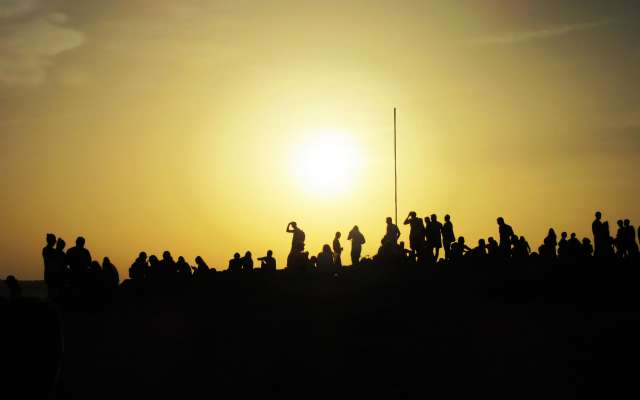
רייזע ריפּאָרץ ספּאַין
